Final Exam Objects
1/72
There's no tags or description
Looks like no tags are added yet.
Name | Mastery | Learn | Test | Matching | Spaced |
|---|
No study sessions yet.
73 Terms
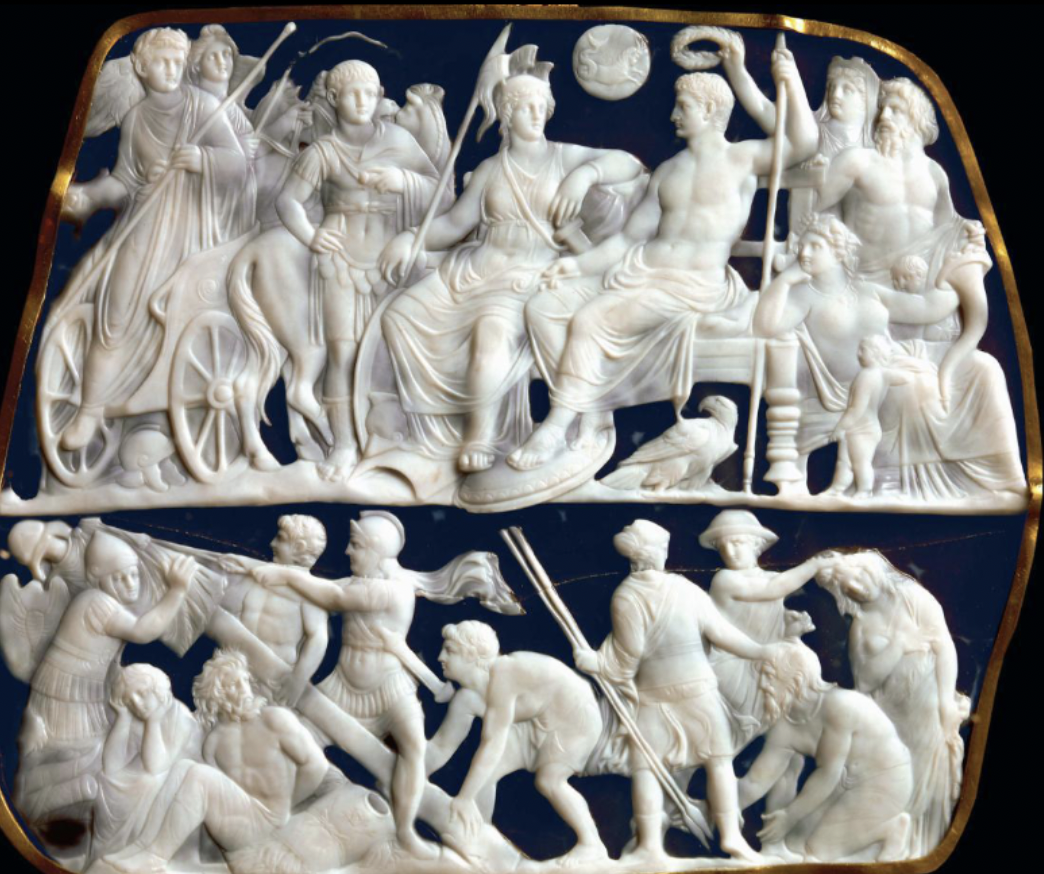
Gemma Augustae, Sardonyx Cameo, 15 CE
Sculpture made of semi-precious stone with different layers that have different colors. Image depicts succession discussions
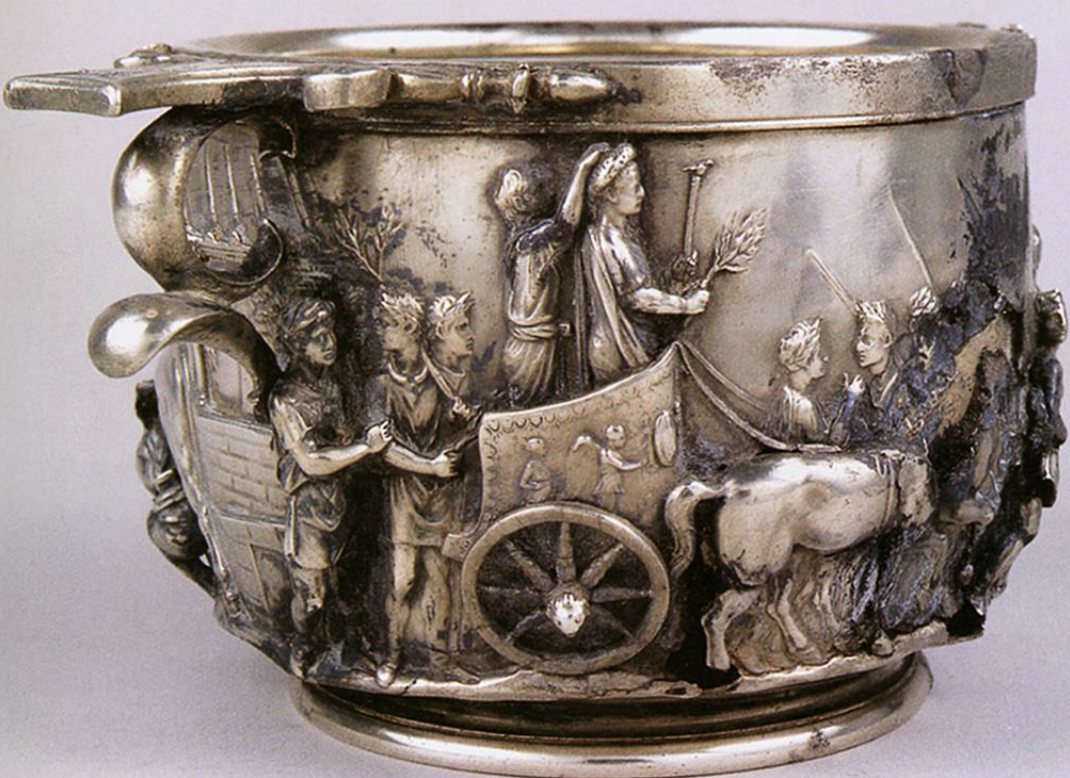
Triumph of Tiberius, Boscoreale, 15-20 CE, Silver
Scyphus = vessel with handles on side for drinking, used by elites in their private residences
Triumph image
Image of emperor being handing winged “victory” goddess
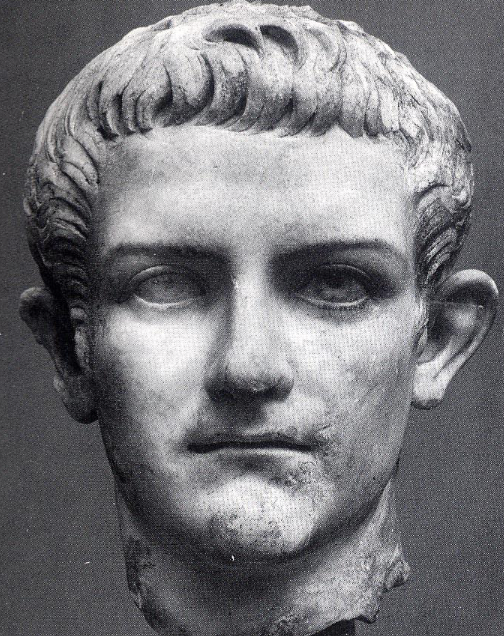
Portrait of Caligula, Asia Minor, 37-38 CE, Marble
Surprising that we have this portrait, as Caligula was subject to Demnatio memoriae due to his cruelty and desire to act like a god
Young depiction, as he was killed before he turned 30
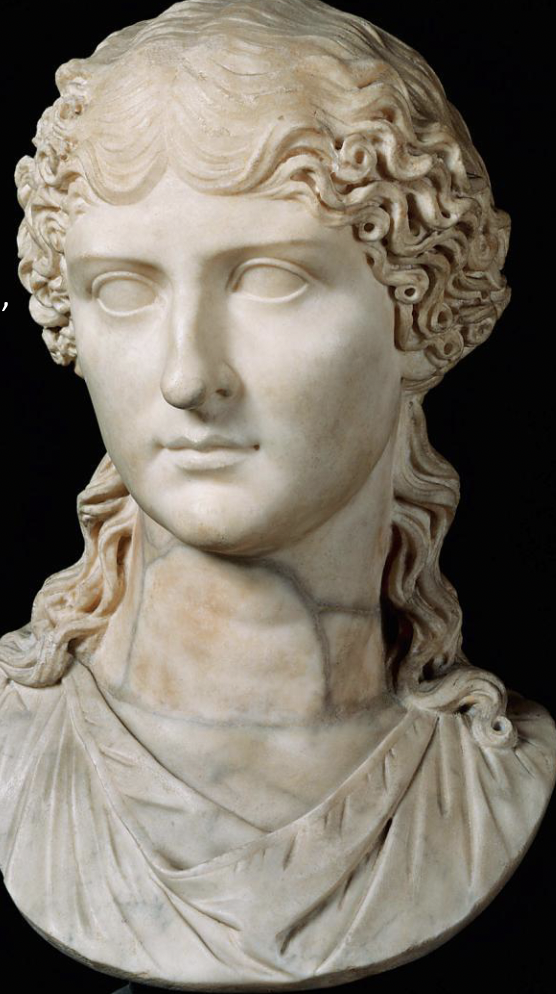
Bust of Agrippina the Elder, Rome, 40-45 CE, Marble
Mother of Caligula, was murdered by Caligula
Hairstyle: no nodus but still pulled back, curly hair. This style became popular with female portraits
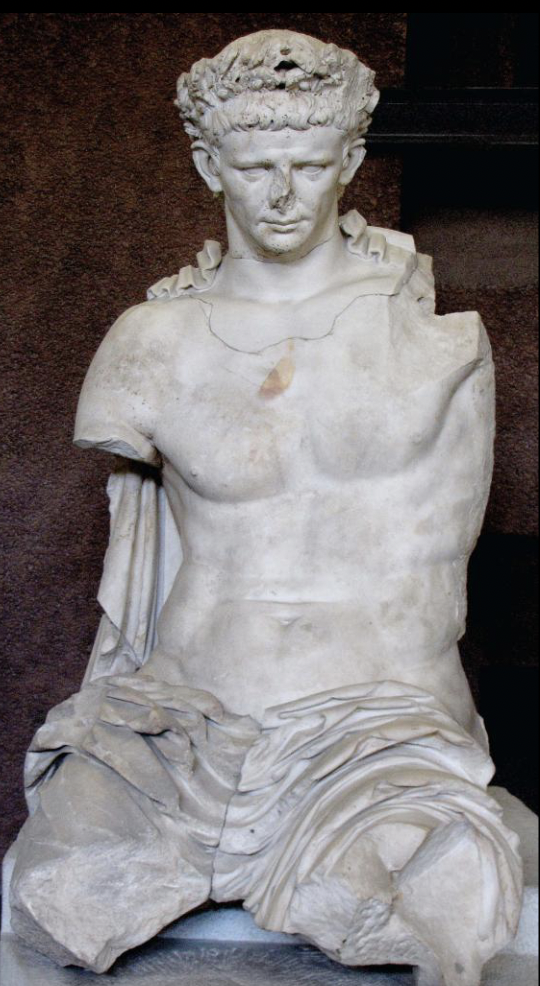
Claudius Enthroned in Guise of Jupiter, Cerveteri, 45-54 CE, Marble
Depicted as Jupiter, king of Roman gods
Contrast to Claudius’s reputation as being weak (disabled)
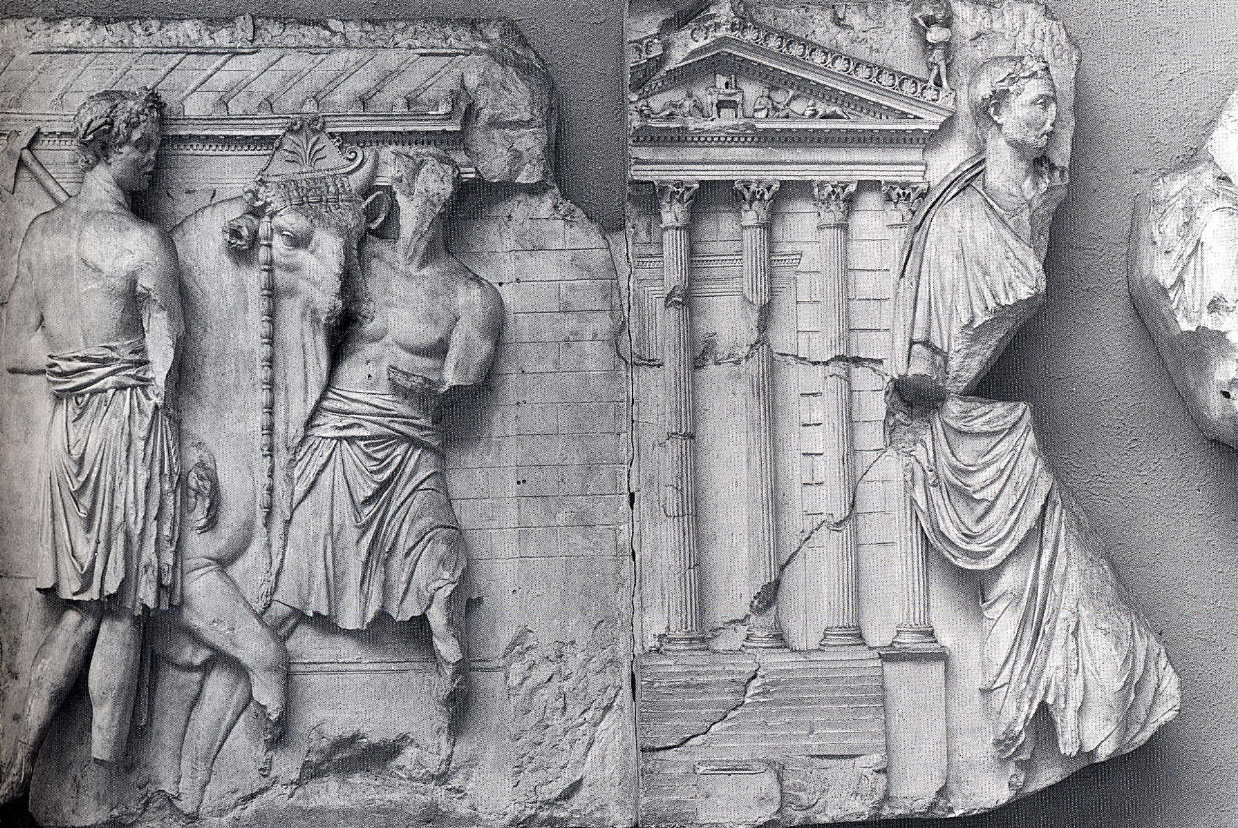
Sacrifice at Temple of Mars Ultor, from Ara Pietatis Augustae, Rome, 43 CE, Marble
Sacrifice image as to appeal to piety of Claudius

Nero, Velleia, 48-51 CE, Marble
Young depiction, as Nero became emperor at 17 years old
Bulla = circle necklace thing, only worn by young boys
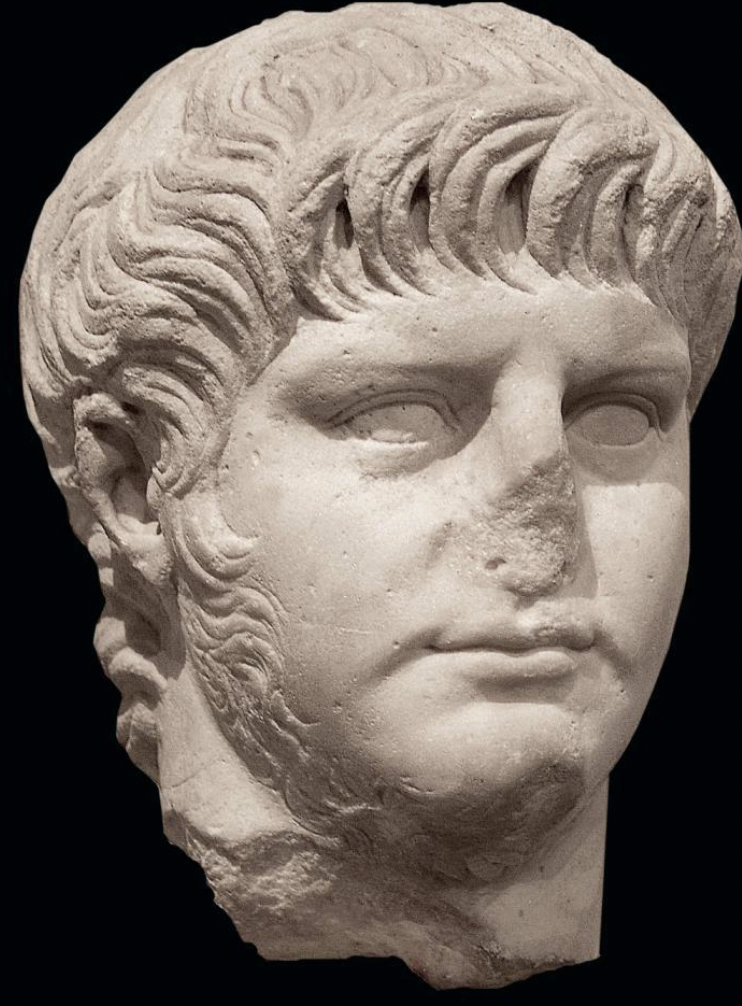
Head of Nero, Rome, 59-64 CE, Marble
Neck beard is consistent with older depictions of Nero
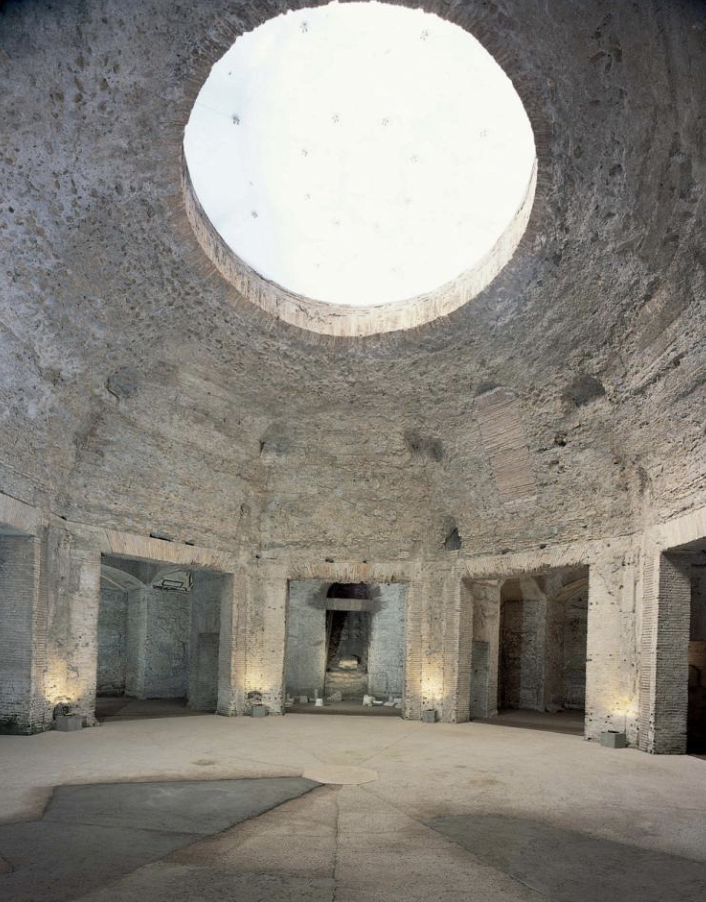
Servus and Celer Octagonol Hall, Domus Aurea in Rome, 64-68 CE
Dome Oculus
In Nero’s 2nd imperial residence which contained luxurious architectural structures and art
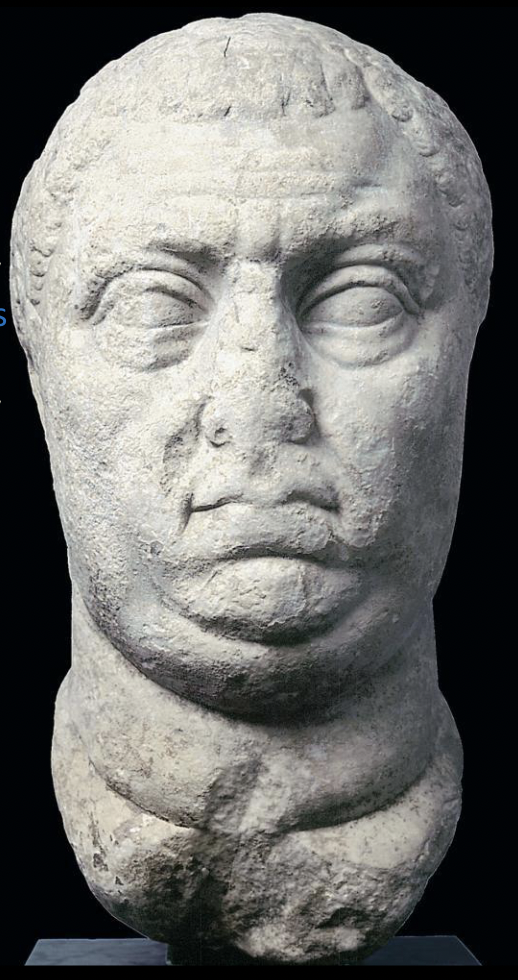
Head of Vitellius, Rome, 69 CE, Marble
Not well liked, he was known for banqueting a lot and being overindulgent/gluttonous
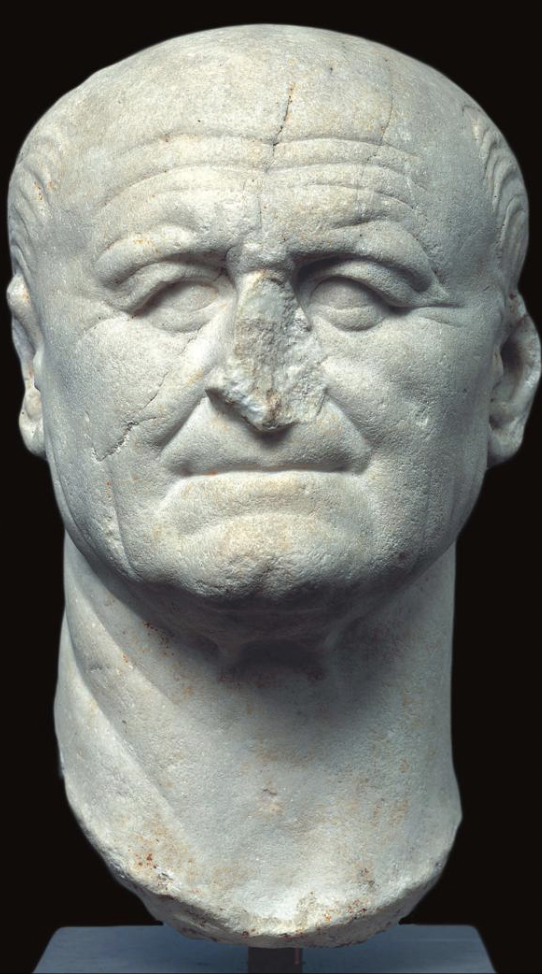
Head of Vespasian, 75-79 CE, Carthage, Marble
First emperor not from senatorial class, he was from Equestrian Class
Prioritized public buildings
Efforts to contrast himself from Nero and Julius Claudius emperors
Dies of illness
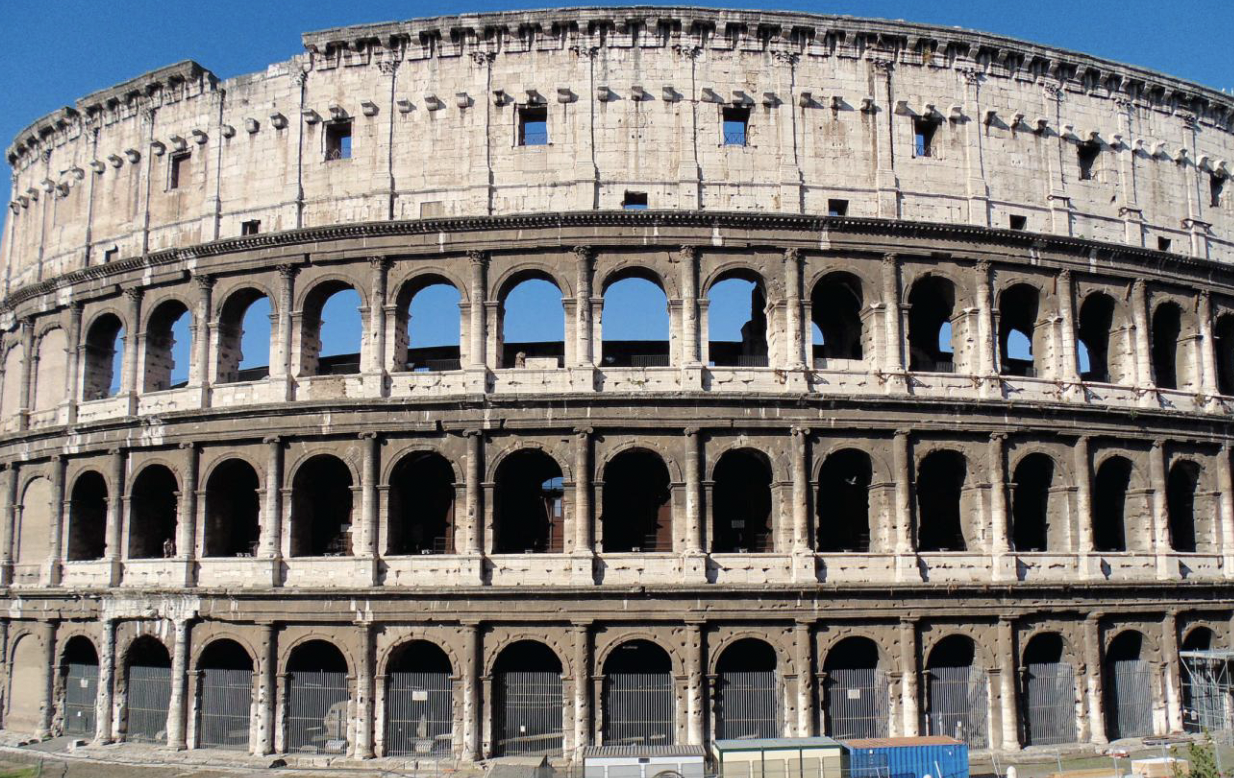
North Side of Colusseum (Flavian Amphitheater), Rome, 70-80 CE
Variety of materials used: Limestone, Tuff, and Concrete
Mixed orders (Doric, Ionic, Corinthian, Pilaster)
Name comes from Colossus of Nero which was nearby

Arch of Titus, made by Domitian, Rome, 81 CE, Marble
Imagery of triumphs and bringing spoils of war back. Efforts to honor Titus for military successes and capturing Jerusalem

Soldiers Carrying Spoils of Jerusalem in Triumph of Titus, Arch of Titus, Rome, 81 CE, Marble
Unclear if this triumph actually occurred, or if this image is a fantasy
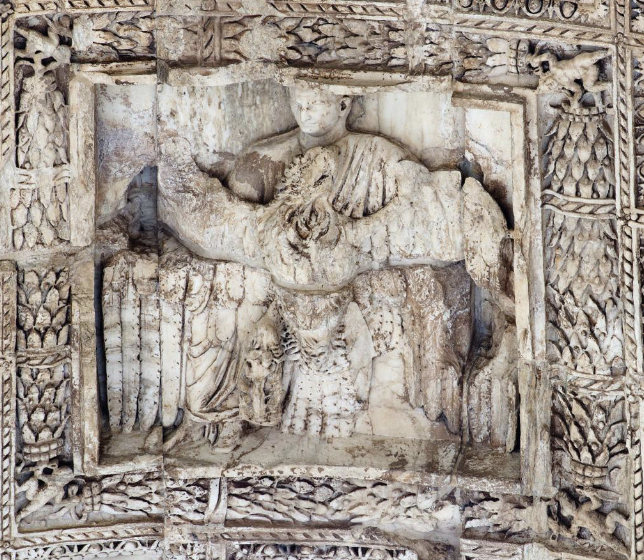
Apotheosis of Titus, in passageway of Arch of Titus, Rome, 81 CE, Marble
Location of center of arch indicates importance. Perhaps arch meant to honor Titus and regard him as a spiritual and political figure
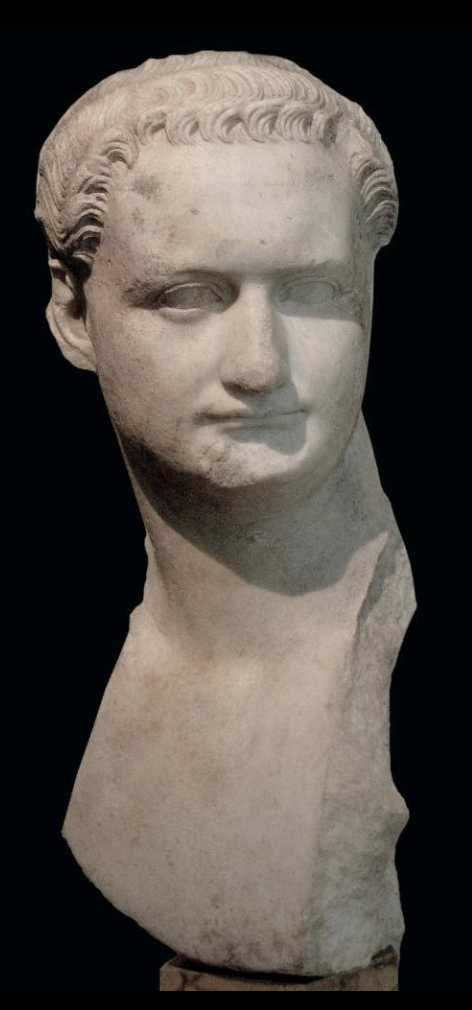
Bust of Domitian, Rome, 88 CE, Marble
Domitian was popular with military and plebeian classes, as he gave out lots of money to both populations. He ruled as an autocratic leader and eventually experienced Damnation memoraie, so this statue must have been made during his reign as emperor before his legacy was known!
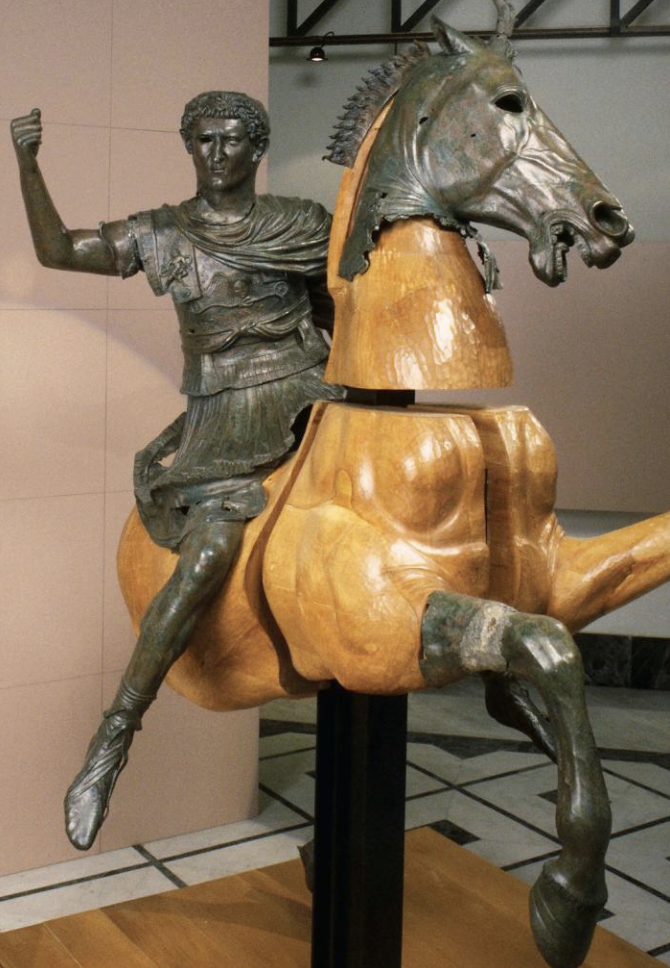
Equestrian Statue of Nerva (formerly Domitian), Miseno, 97 CE, Bronze
Herculean imagery and marks on face indicate that this statue was recarved and originally depicted Domitian.
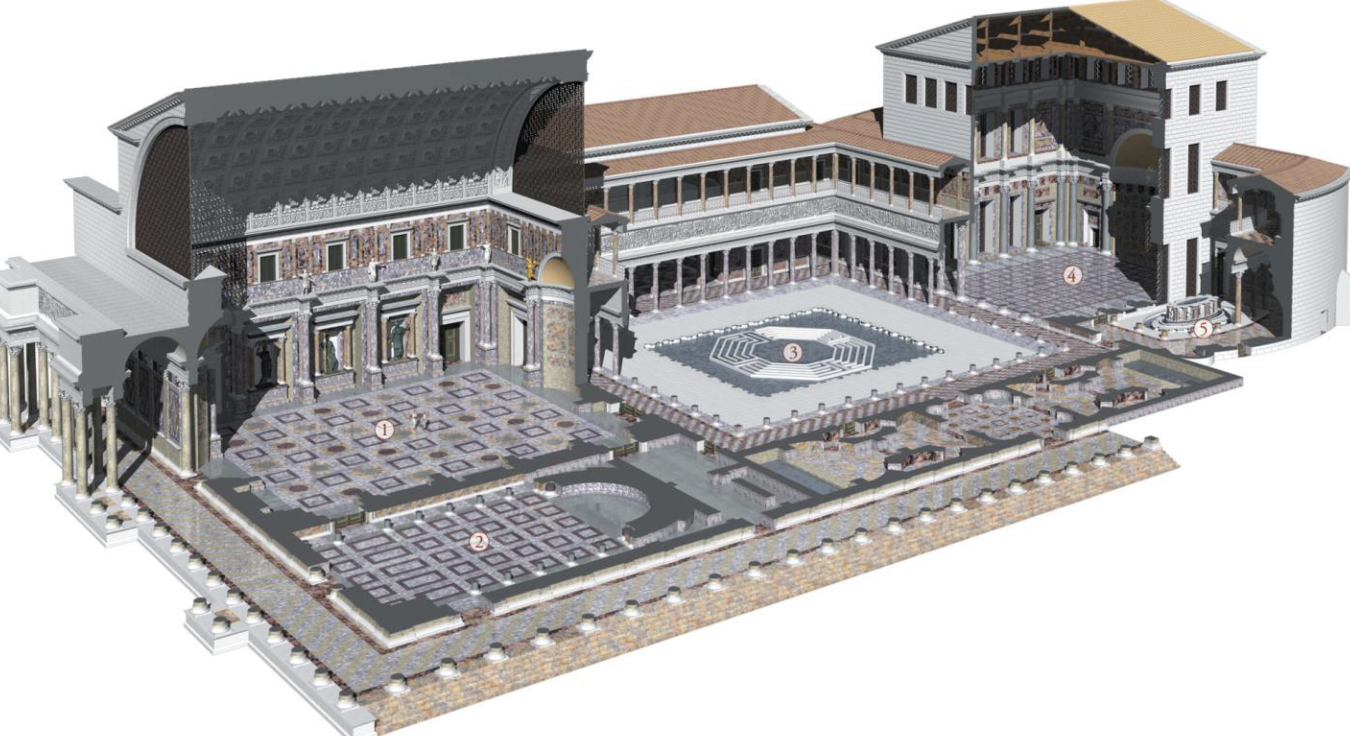
Rabirius: Restored View of the Palace of Domitian, Rome, 92 CE, Marble, Marmora, Concrete
Palace served as imperial residence and administrative hub. Featured nymphaem and an aula regia with colossal basalt statues (indicates wealth/power)
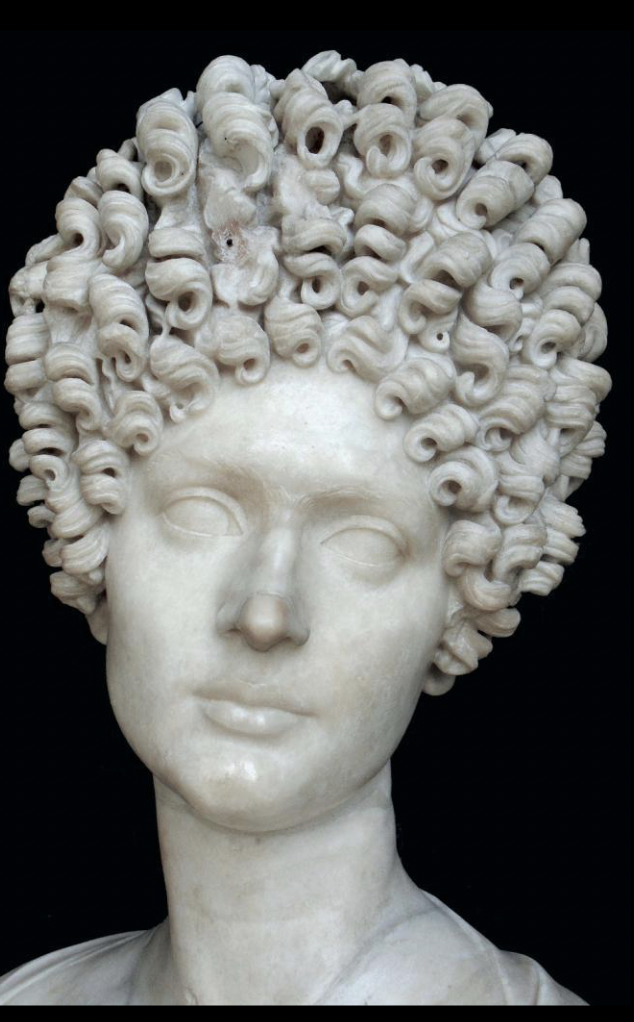
Head of a Young Woman, Rome, Late First or Early Second Century, Marble
Distinct hair that was a marker of wealth. Hair style indicates use of drill in carving process.
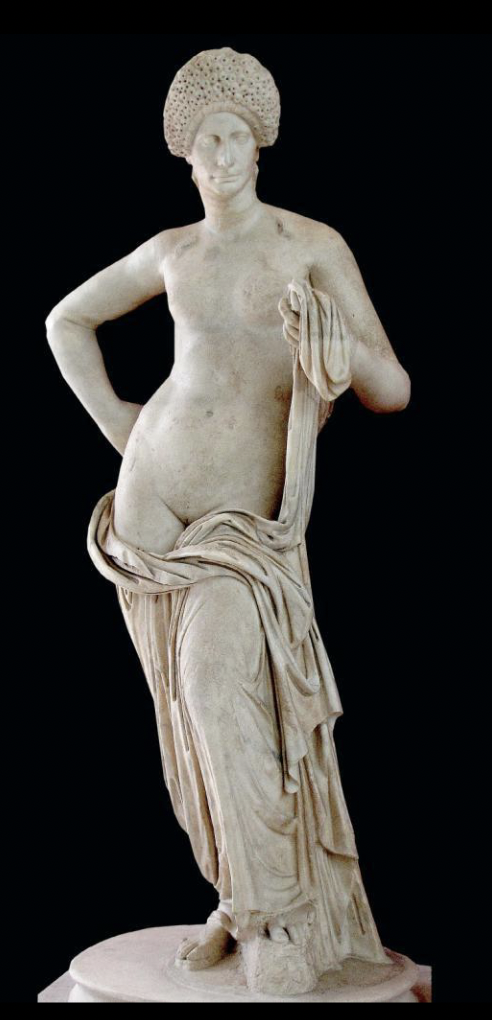
Statue of a Flavian Woman in Guise of Venus, Rome, Late First Century CE, Marble
Hairstyle indicates use of drill in carving process. Depicts age, yet still idealized, which is typical for female portraits.
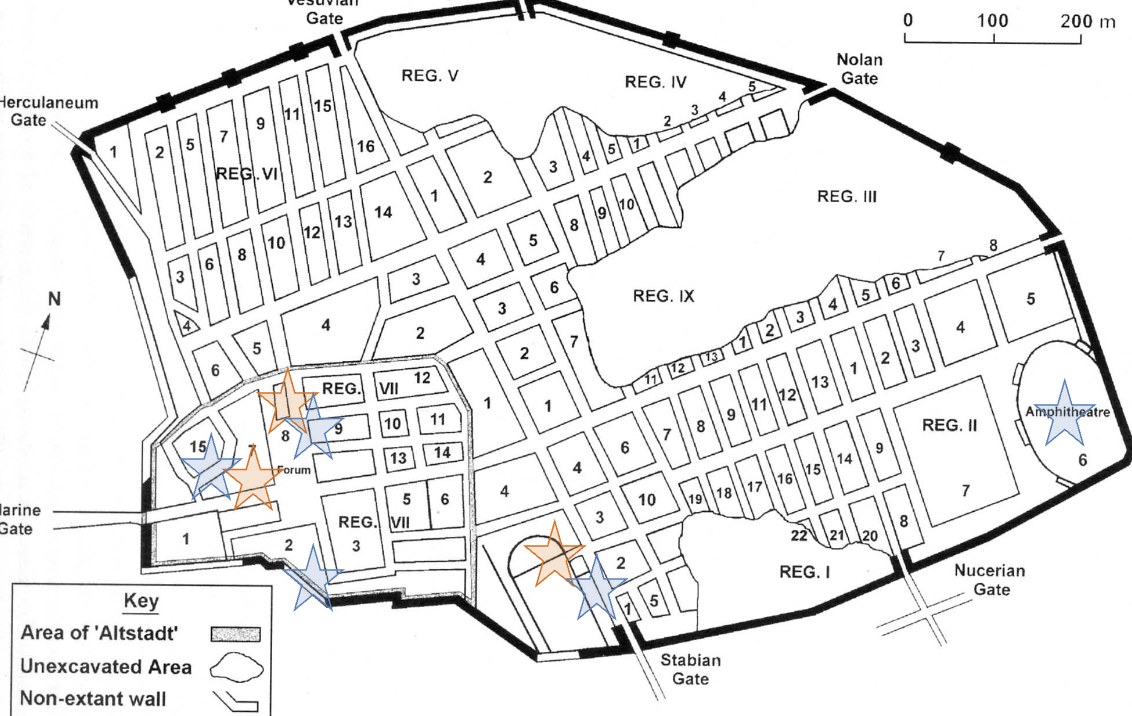
Roman Colony, 80 BCE
Not fully excavated
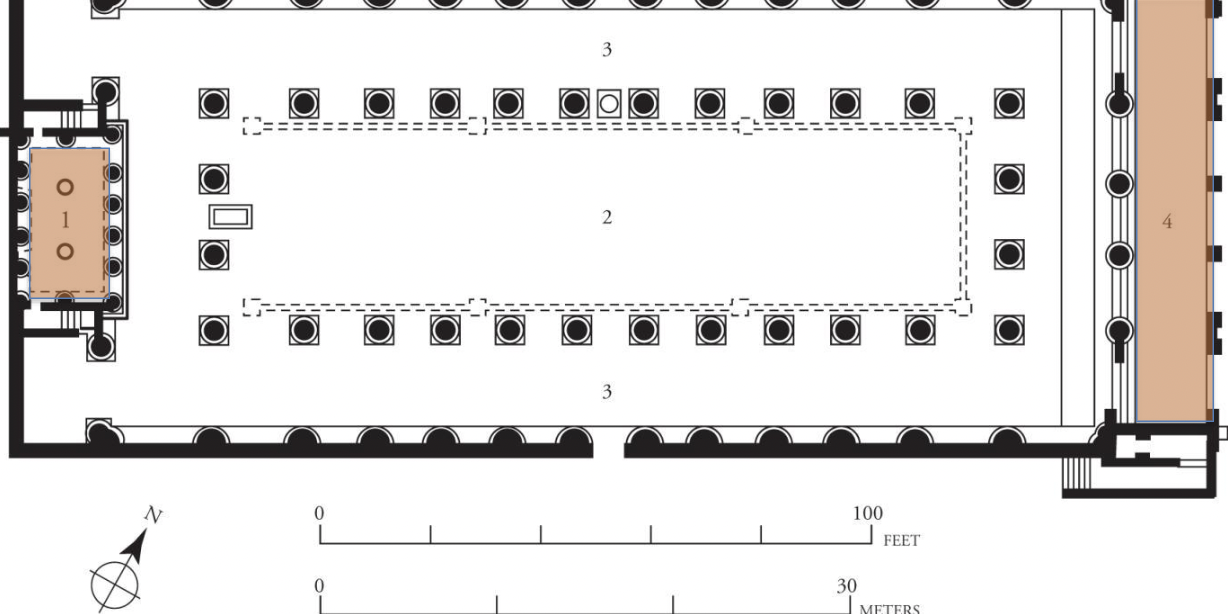
Plan of the Basilica, Pompeii, 80-70 BCE
Public space where trials were held and also hub for business and commerce

Plan of the Forum Baths, Pompeii, 80-70 BCE
Augustan era. Four rooms which were in a particular order: Apodyterium, Tepidarium Caldarium, and Frigidarium.
Location for socialization and networking.
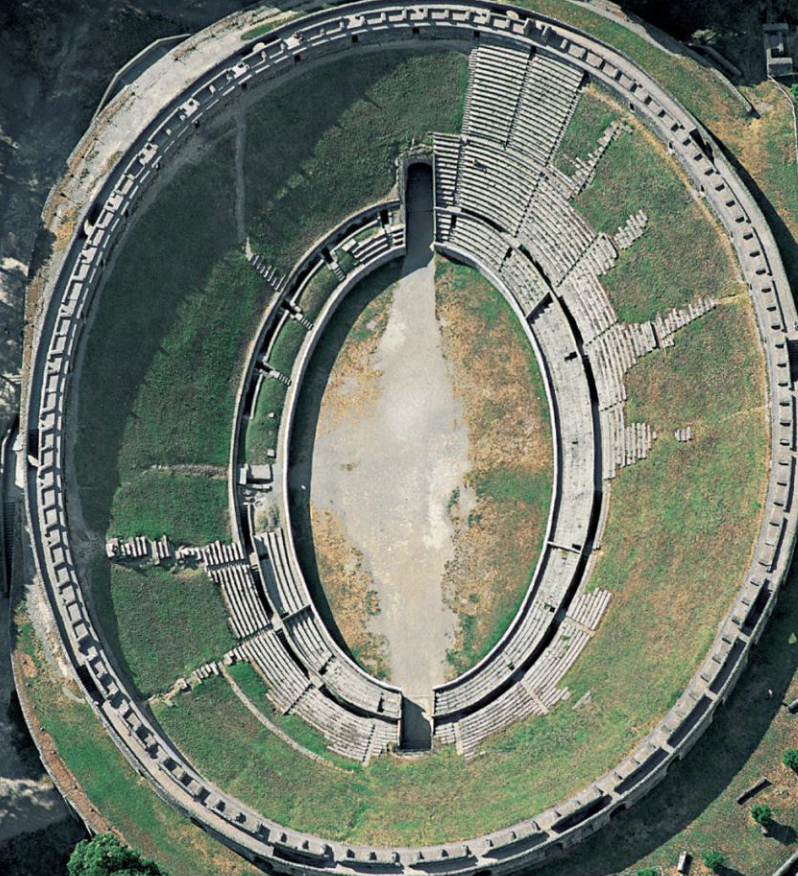
Aerial View of the Amphitheater, Pompeii, 80-70 BCE, Limestone
Unfinished when Mt. Vesuvius erupted. Not terribly large, as Pompeii was a relatively small town
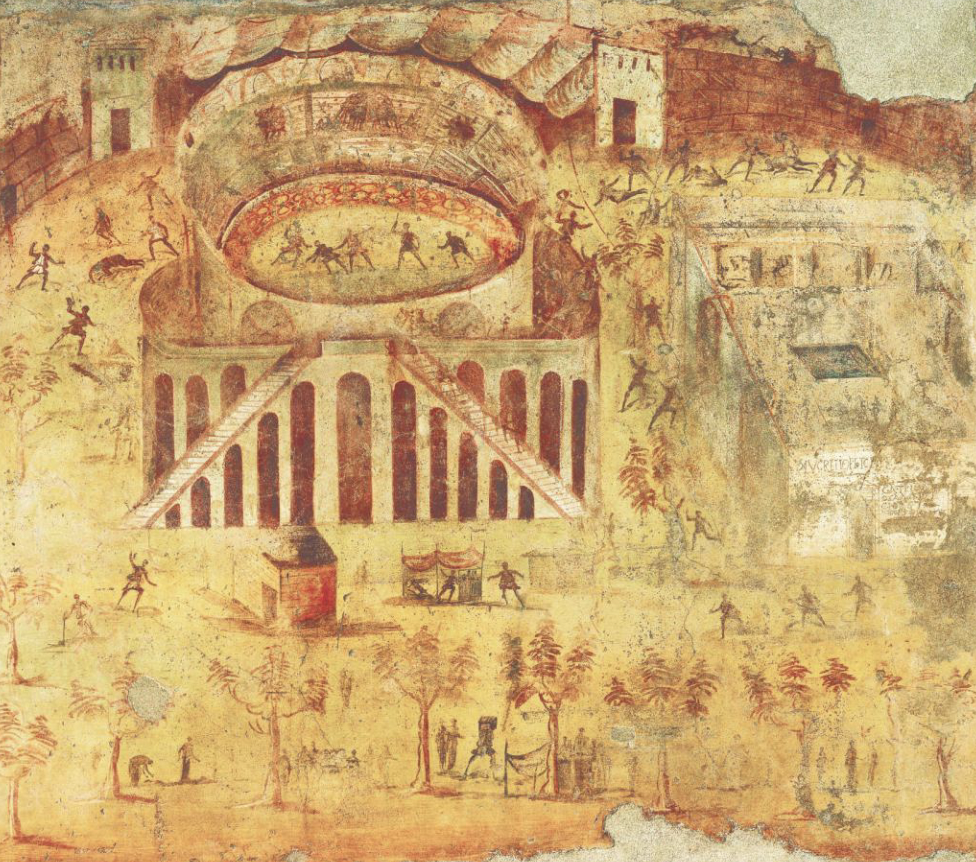
Brawl in the Pompeii Amphitheater, Pompeii, 60-79 CE, Fresco
Depicts fight between Pompeiians and Nucerians in 59 CE, likely due to legacy of Social Wars and Nero establishing Roman colony at Nuceria.

Capitolium and Western Arch, Pompeii, 62-70 CE, Marble
Depicts impact of the earthquake of 62, including tilting buildings.
Located on an altar in a home, perhaps meant to thank a god/deity for protection during earthquake.
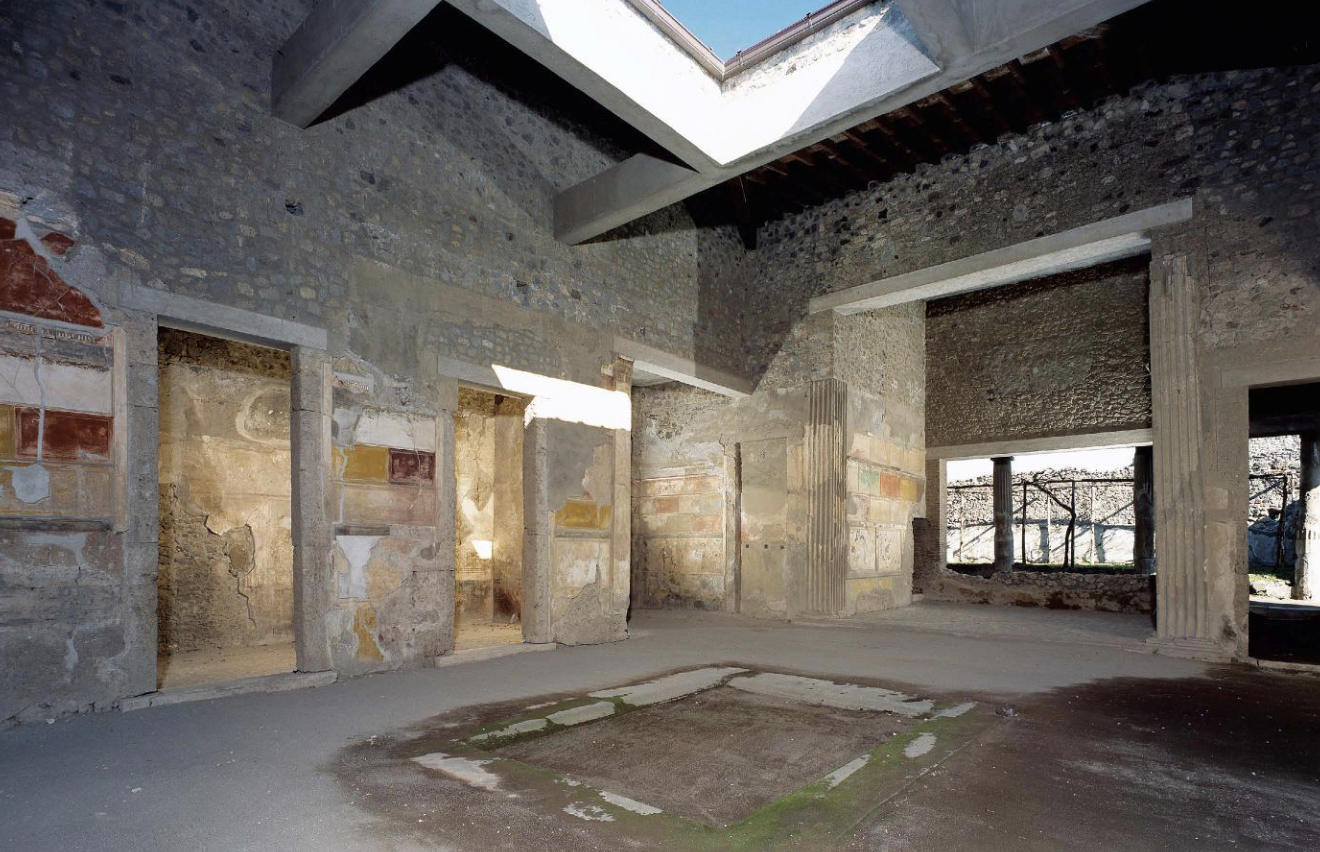
Atrium of the House of Sallust Looking Towards the Hortus, Pompeii, Mid-Second Century BCE, Tufa
Features peristyle that’s open to sky.
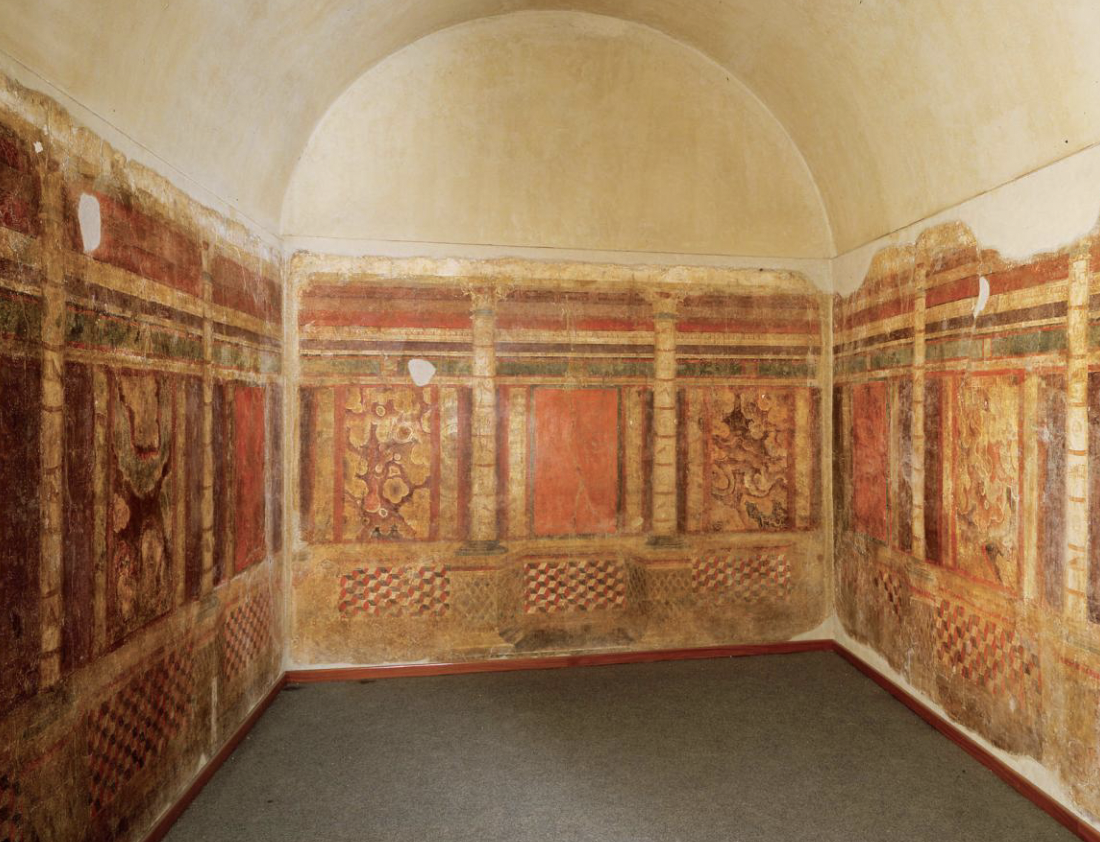
Second Style Mural Paintings in Room 2 in House of the Griffins, Rome, 80 BCE, Fresco
Shows the second style’s attempt to recreate “real space” and depth on the other side of the wall
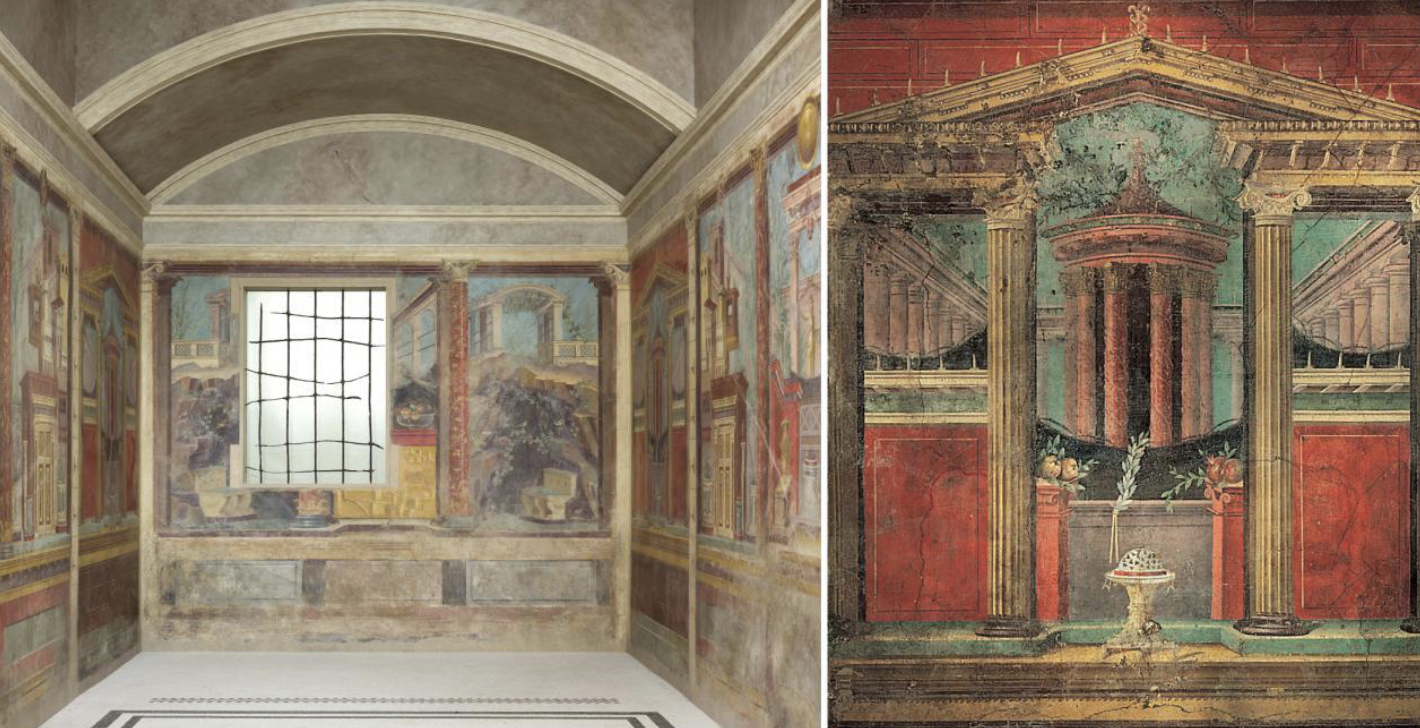
Second Style Mural Paintings, in Cubiculum M of the Villa of Publius Fannius Synistor, Boscoreale, 50-40 BCE, Fresco
Depictions of certain types of scenery, meant to guide the viewer to believe its on the other side of the wall.
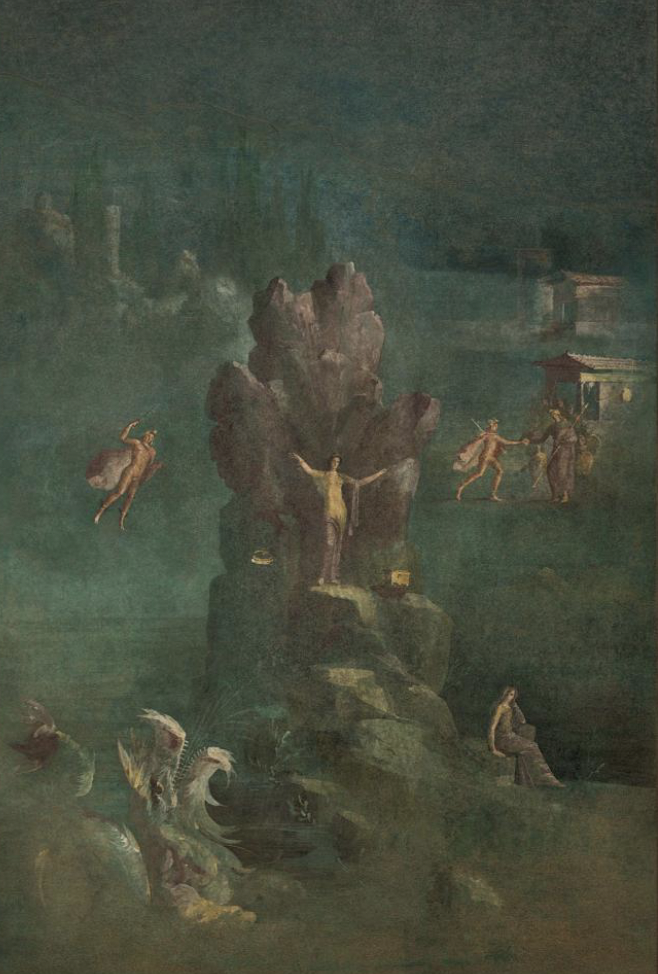
Perseus and Andromeda, Detail of a Third Style Mural Painting, Boscotrecase, 10 BCE, Fresco
Shows specific myth, which indicates that owner of mural was formerly educated and therefore has wealth/status.
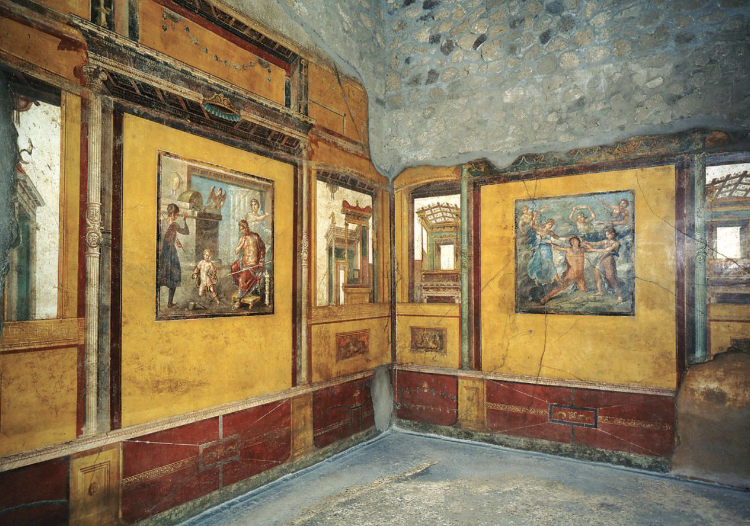
Fourth Style Mural Paintings, Pentheus Room, House of the Vettii, Pompeii, 62-79 CE, Fresco
Depicts fourth style, which incorporates elements of 1st-3rd styles.
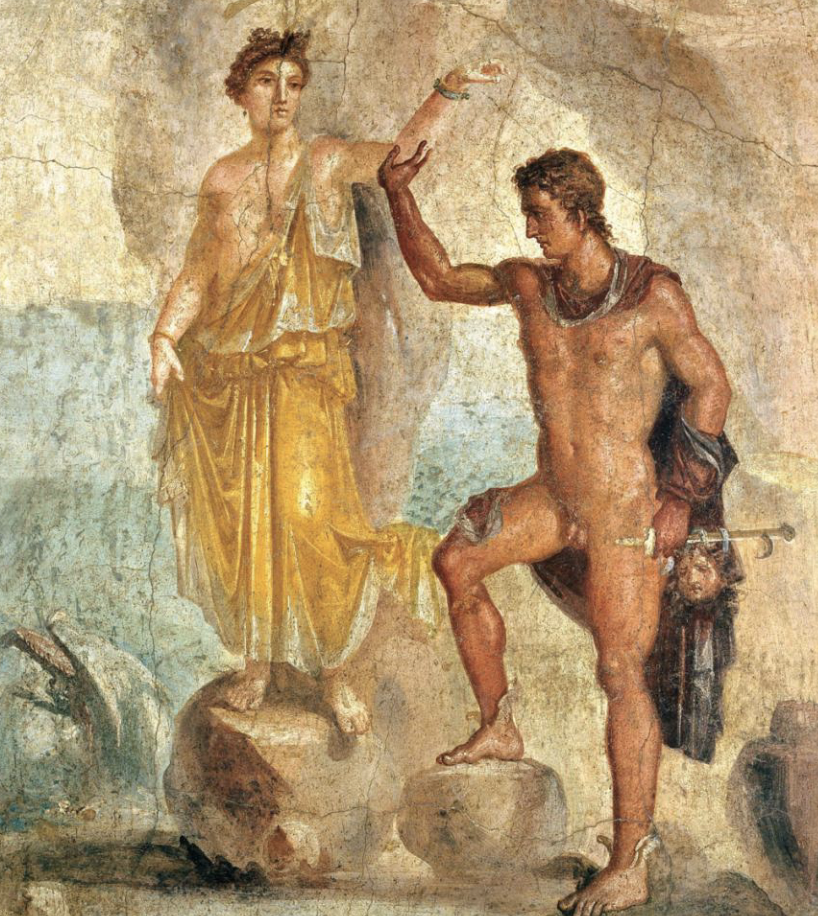
Perseus and Andromeda Mural Painting, Pompeii, 62-79 CE, Fresco
Example of monoscenic narration

Still Life with Peaches, Fourth Style Mural Painting, Herculaneum, 70-79 CE, Fresco
Still life images usually depict this associated with prosperity, such as food

The Baker Terentius Neo and His Wife, Pompeii, 70-79 CE, Fresco
Holding papyrus and stylus, likely to indicate literacy. This means they were wealthy and educated
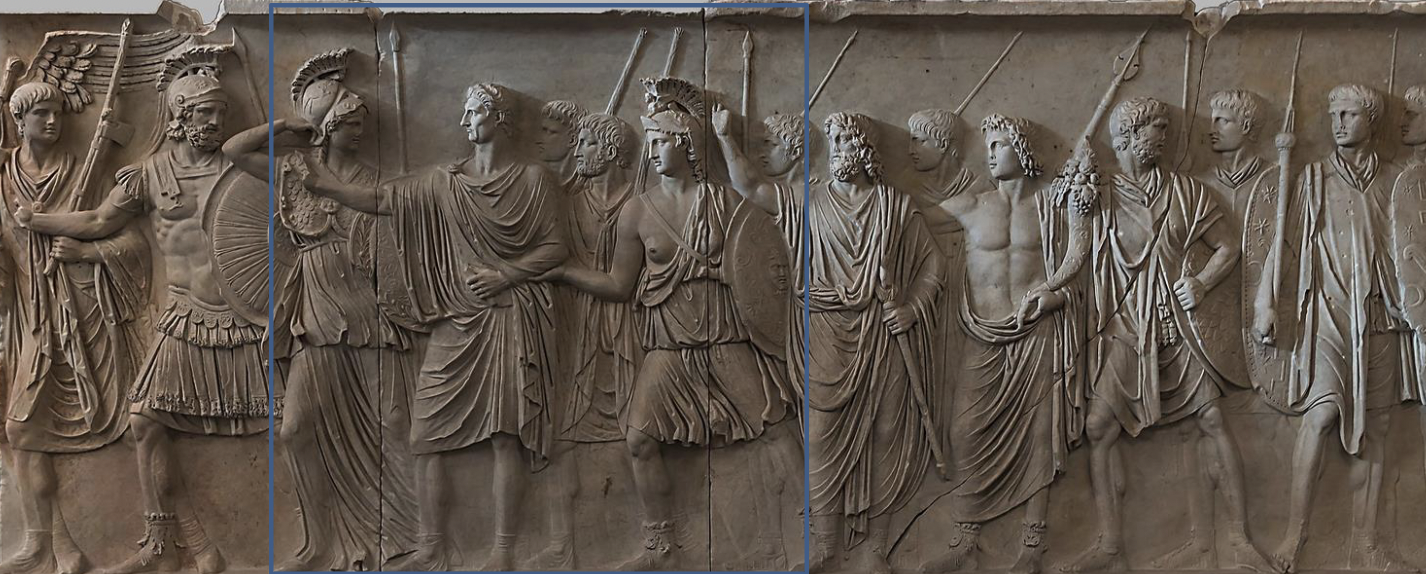
Profectio of Domitian/Nerva, Rome, 93-95 CE, Marble
Reuse of another panel that depicted Domitian. Dramatic cheekbones show rework of Domitian’s full cheeks to depict Nerva, who usually has accentuated cheekbones
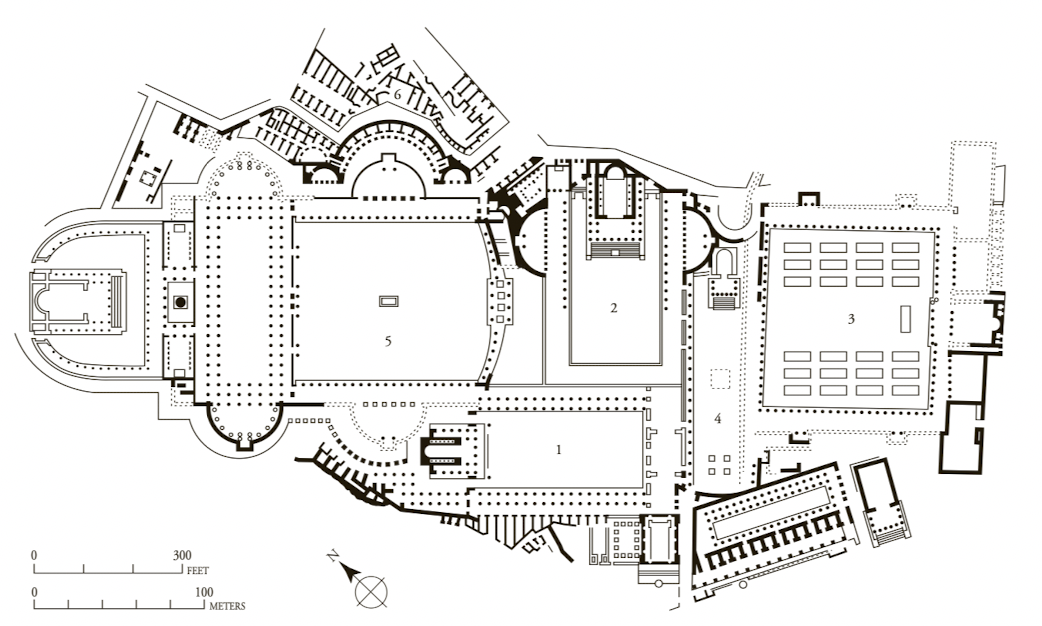
Plan of the Imperial Fora, Rome, 98ish CE
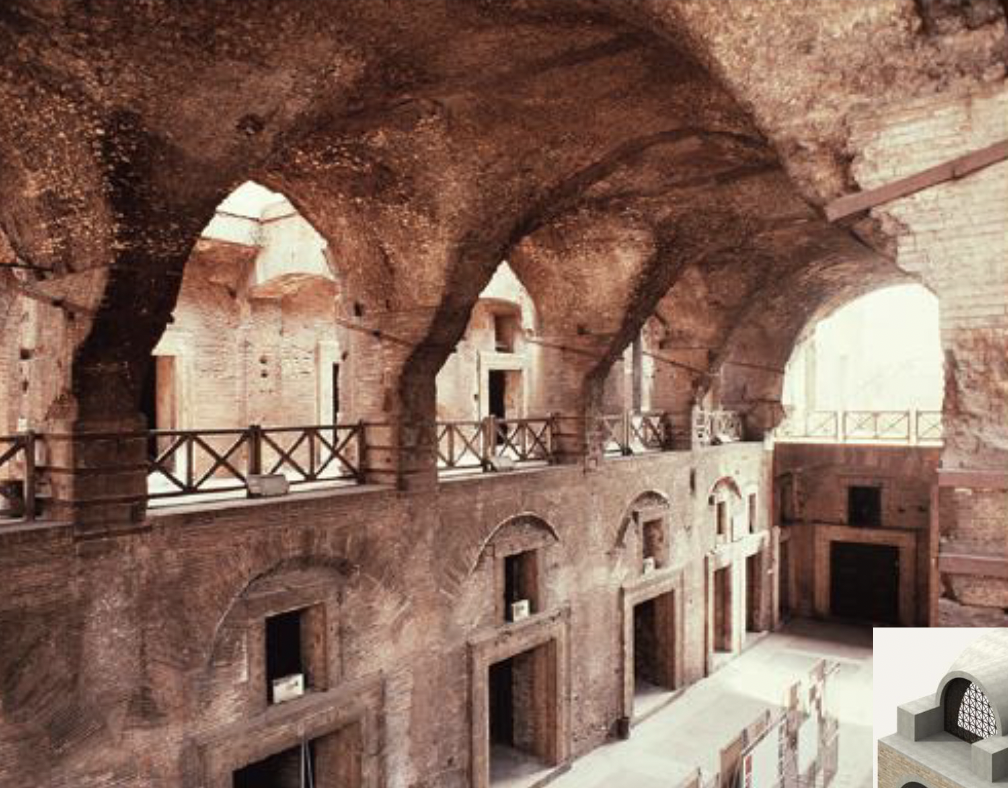
Apollodorus of Damascus, Rome, 100-112 CE, Concrete
Arches and groin vaults require Roman concrete
Hub of economic activity
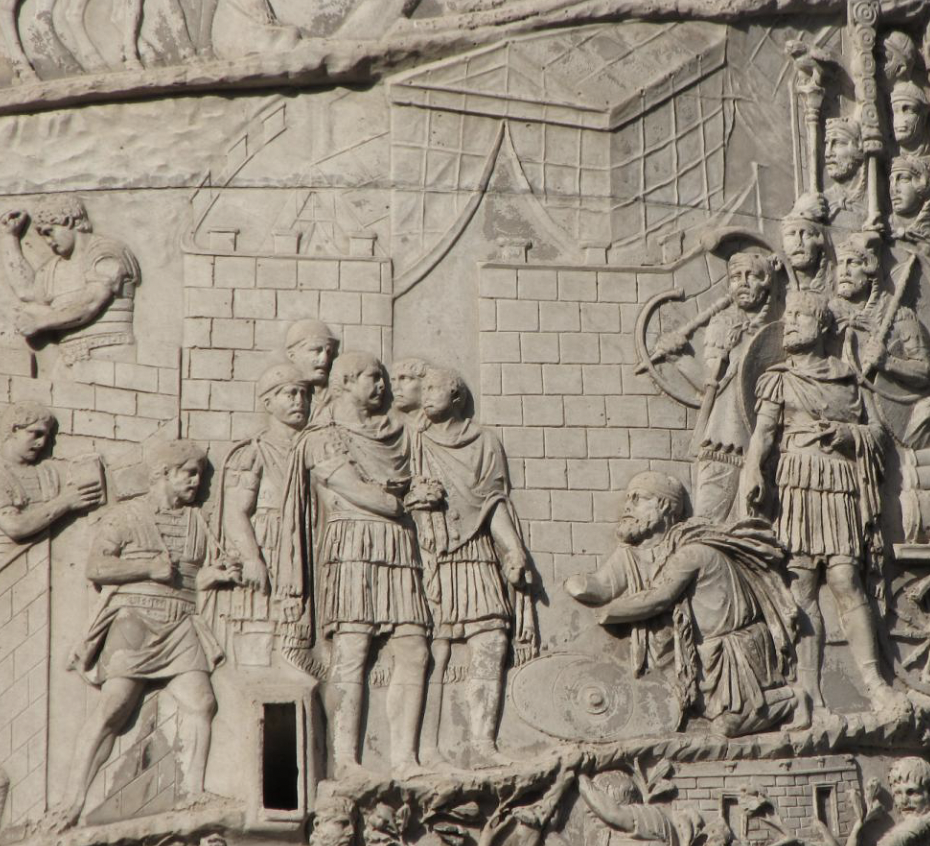
Kneeling Dacian Seeking Clemency from Trajan, detail on Column of Trajan, Rome, 112 CE, Carrera Marble
Meant to celebrate Trajan’s military victory and conquering Dacian territories
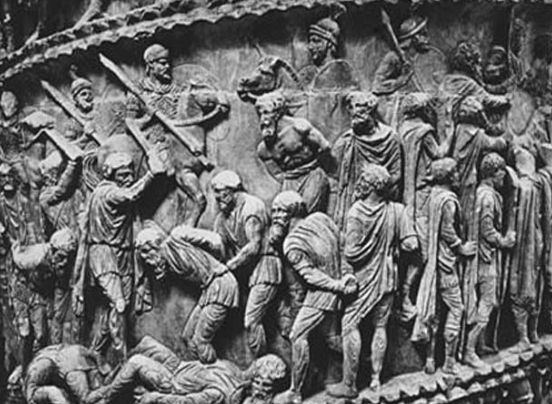
Dacians Attacking Romans, Column of Trajan, Rome, 112 CE, Carrera Marble
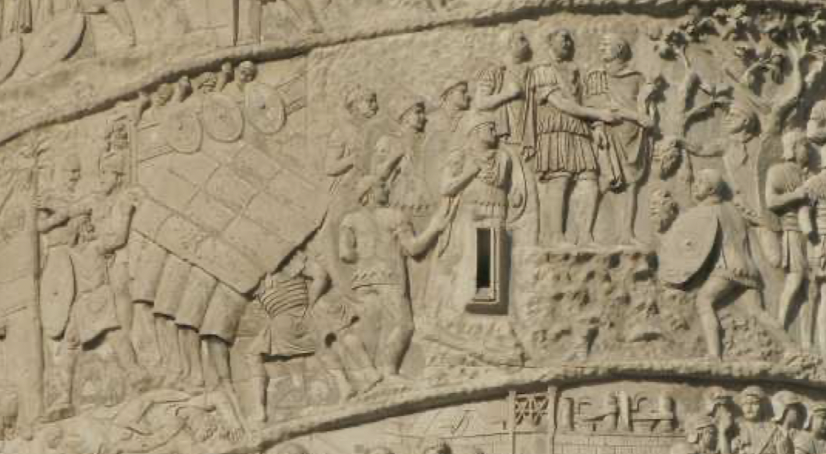
Roman Soldiers Presenting Severed Heads of Dacians to Trajan, Column of Trajan, Rome, 112 CE, Carrera Marble
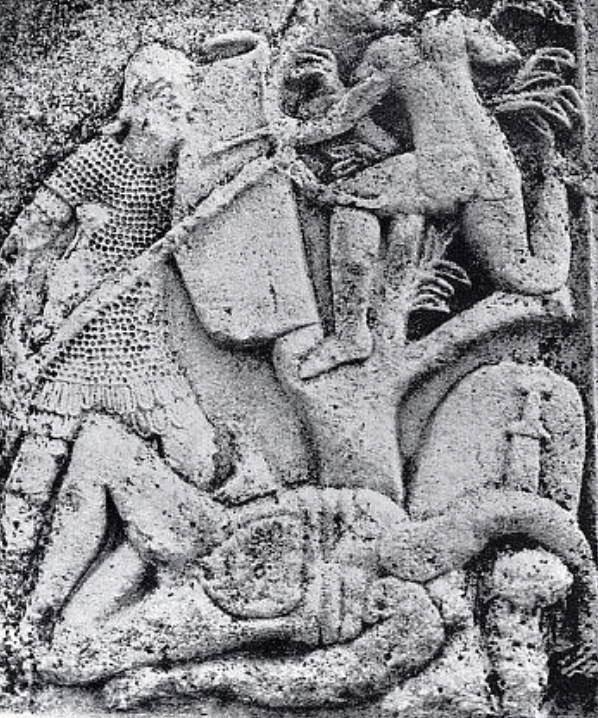
Emperor Victorious “Metope” from Victory Monument, Adamklissi, 109 CE, Limestone
Part of victory monument in conquered territory, as a reminder to the people that they are now under the power of the Roman Empire
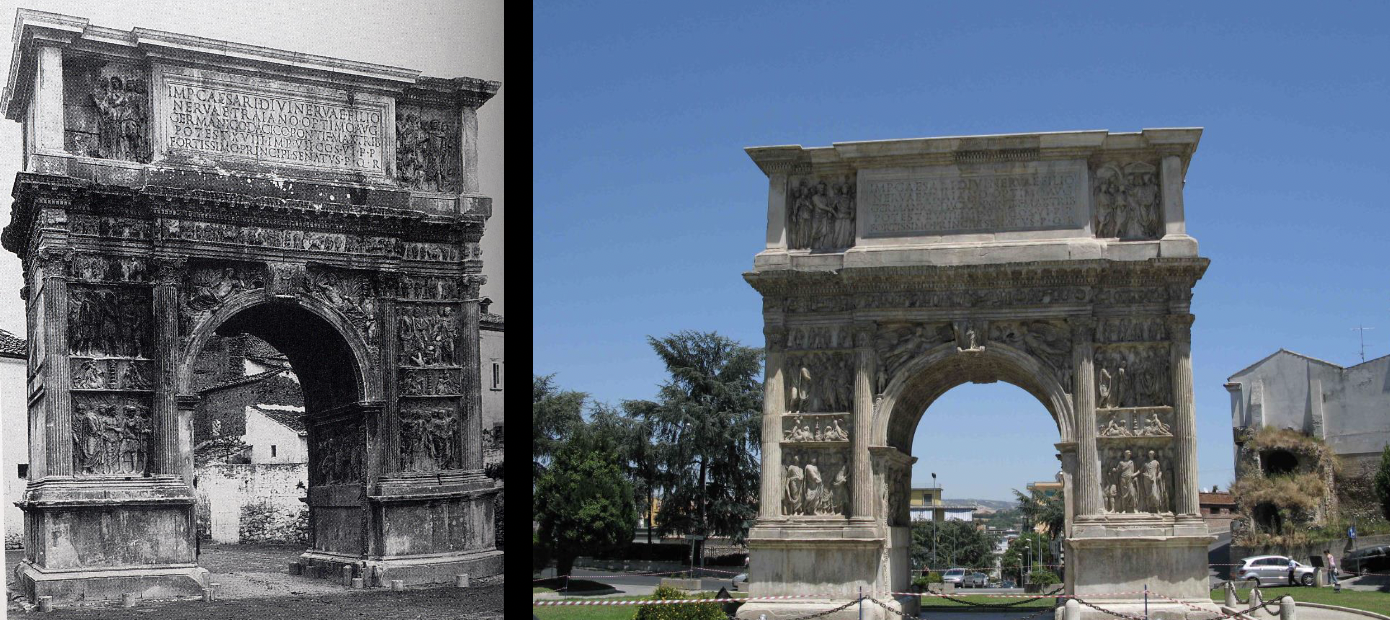
Facades of the Arch of Trajan, Benevento, 114-118 CE, Marble
Image of Zeus offering thunderbolt to Trajan, indicative of his power
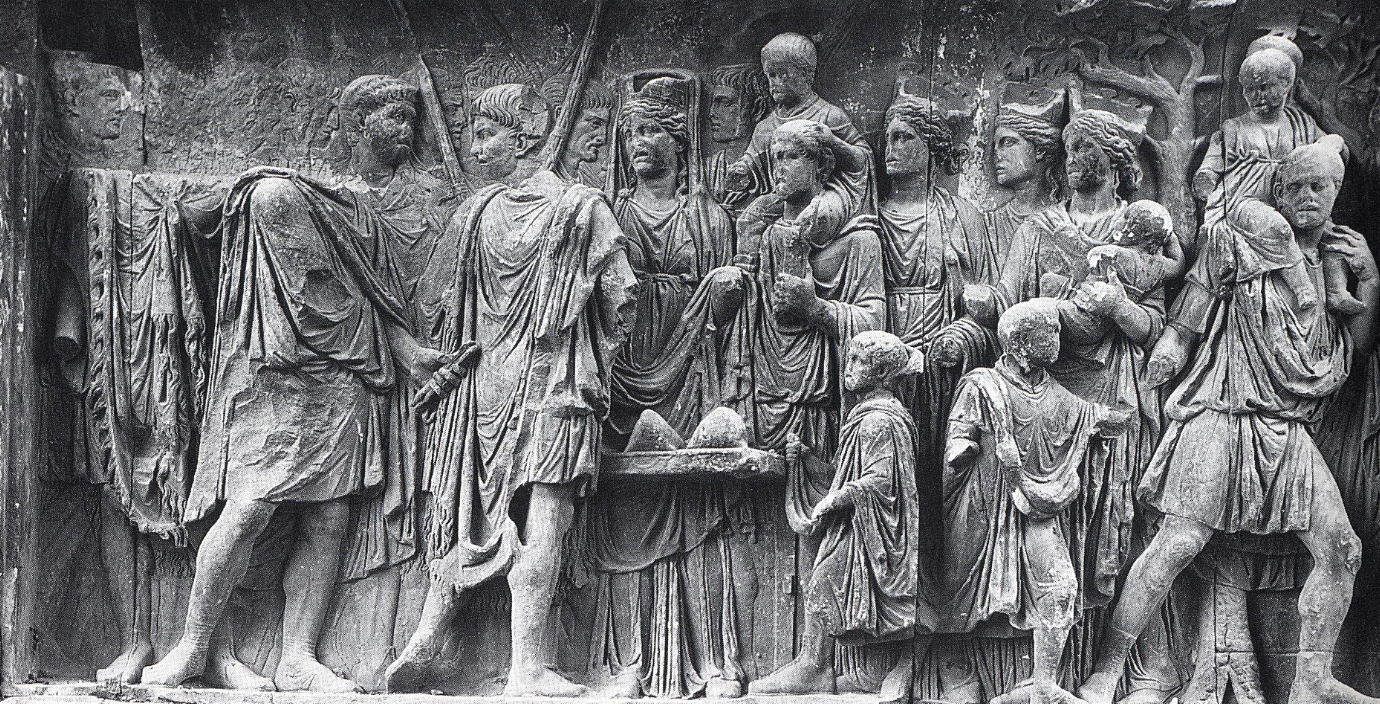
Alimentary Program of Trajan, on Arch of Trajan, Benevento, 114-118 CE, Marble
Demonstrates Trajan’s program to offer food, education, shelter, etc. to children in need. This made him widely liked and likely would want to show this off on his arch
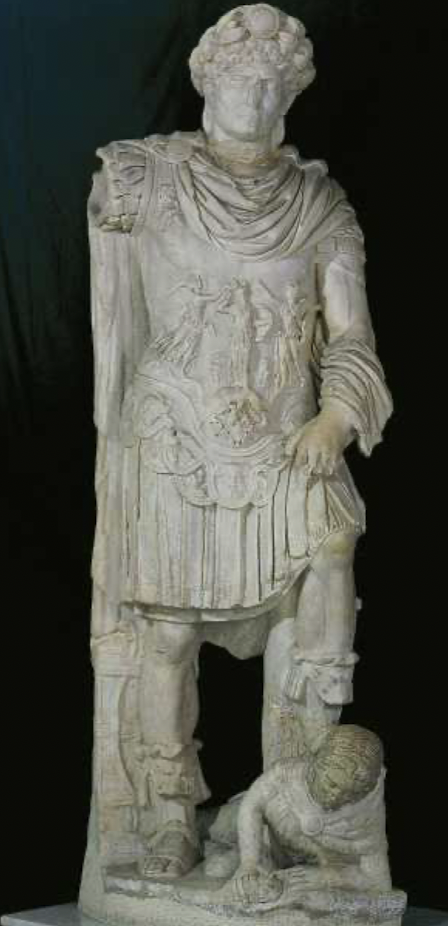
Hadrian as Imperator, Hierapytna, Greece, 120-125 CE, Marble
Breast plate with Minerva and other Roman myth imagery
Standing on defeated barbarian - establishes Hadrian’s authority and power
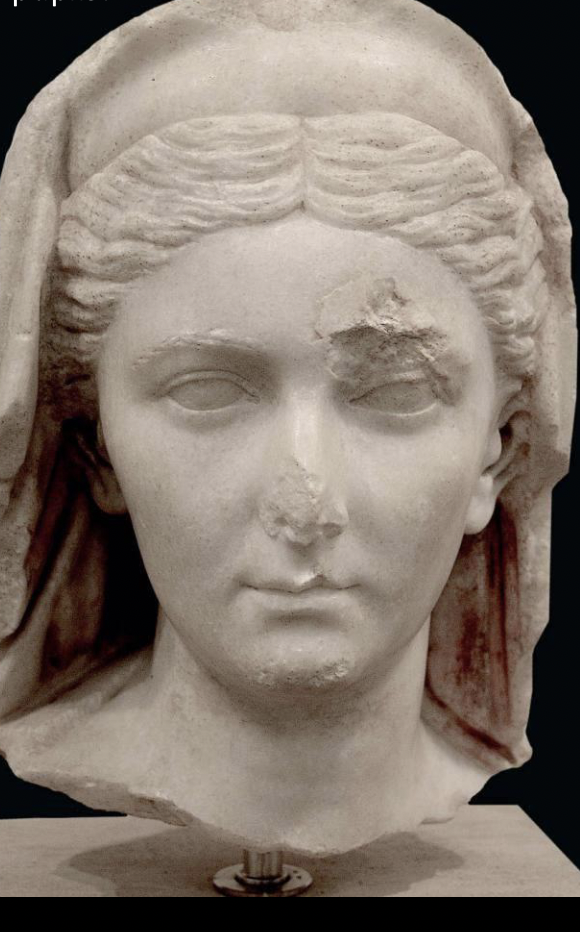
Carved Bust of Sabina, Rome, 136-138 CE, Marble
Carved pupils indicate use of precious stone to add color to eyes
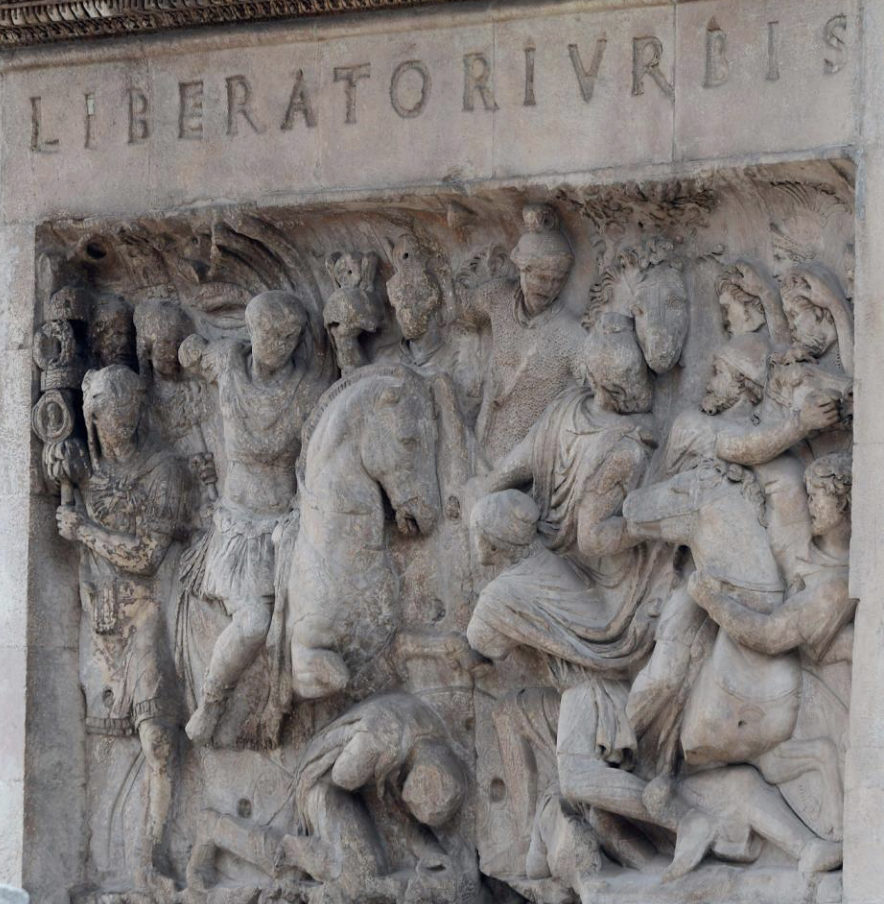
Trajan Battling Dacians, Rome, 117-120 CE, Marble
This was reused for an arch in Rome later - spoliation!
Depicts defeat of Dacians under Hadrian
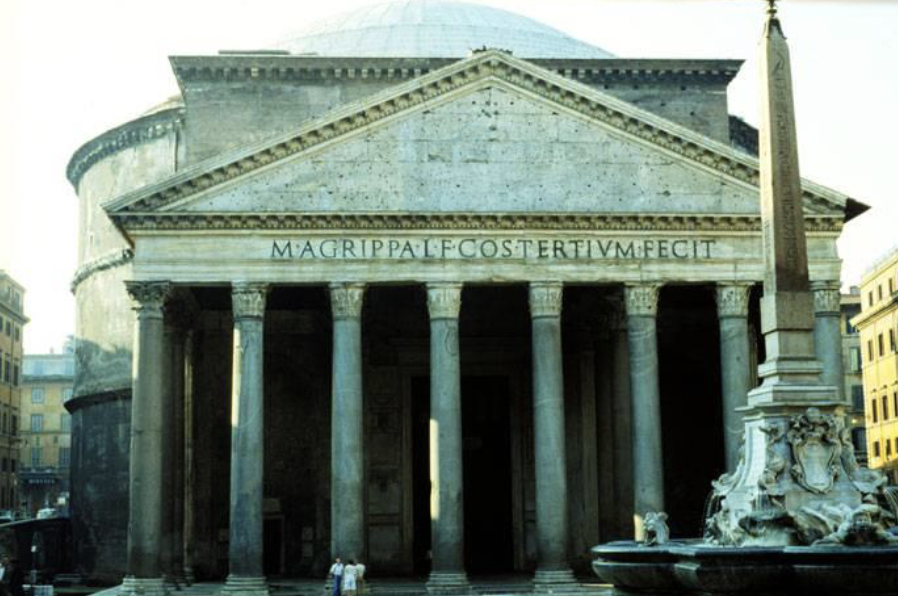
Pantheon, Rome, completed 125 CE, Concrete, Limestone/Travertine, Tufa, and Pumice
Takes from Greek tholos style
Columns are monolithic, making it difficult to repair them
Dedicated to all Gods
Reuse - originally built by Agrippa, but burnt down are was rebuilt

Burning of Tax Debt Records, Rome, 118-120 CE, Marble
Act of forgiveness for all those who had debt under Hadrian - part of why people loved him so much

Adlocutio on the Rostra and Alimenta, Rome, 118-120 CE, Marble
Unclear if made under Trajan or Hadrian
Depicts Alimenta (the aid program)
Rostra = podium or speaker’s platform
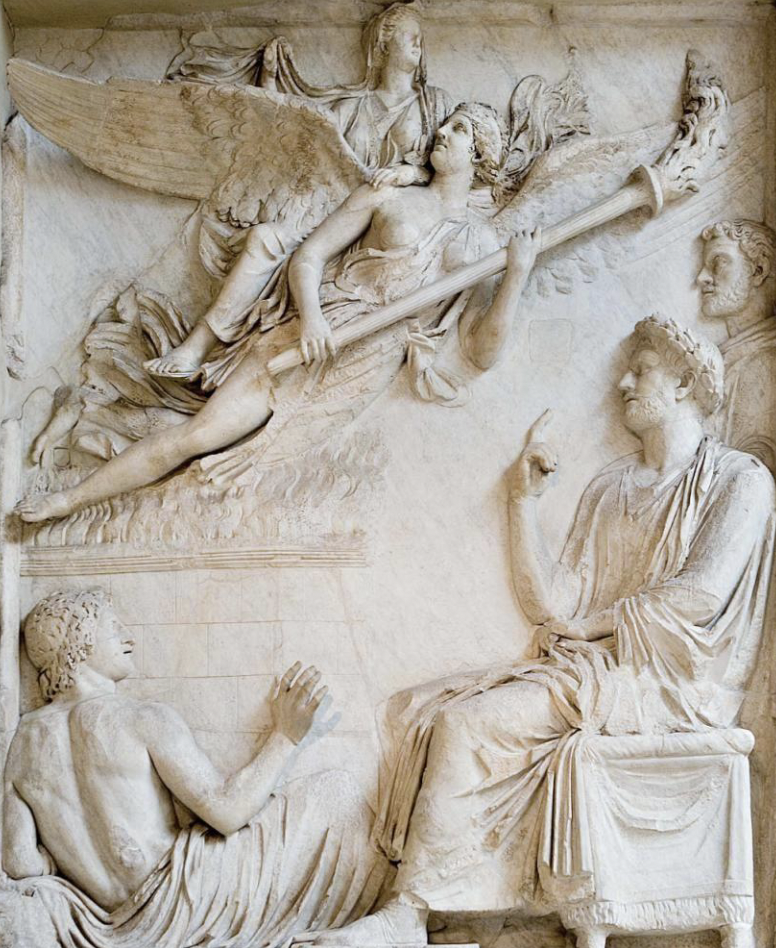
Apotheosis of Sabina, Rome, 136-138 CE, Marble
Ustrinium = site of funeral fire and where body is cremated
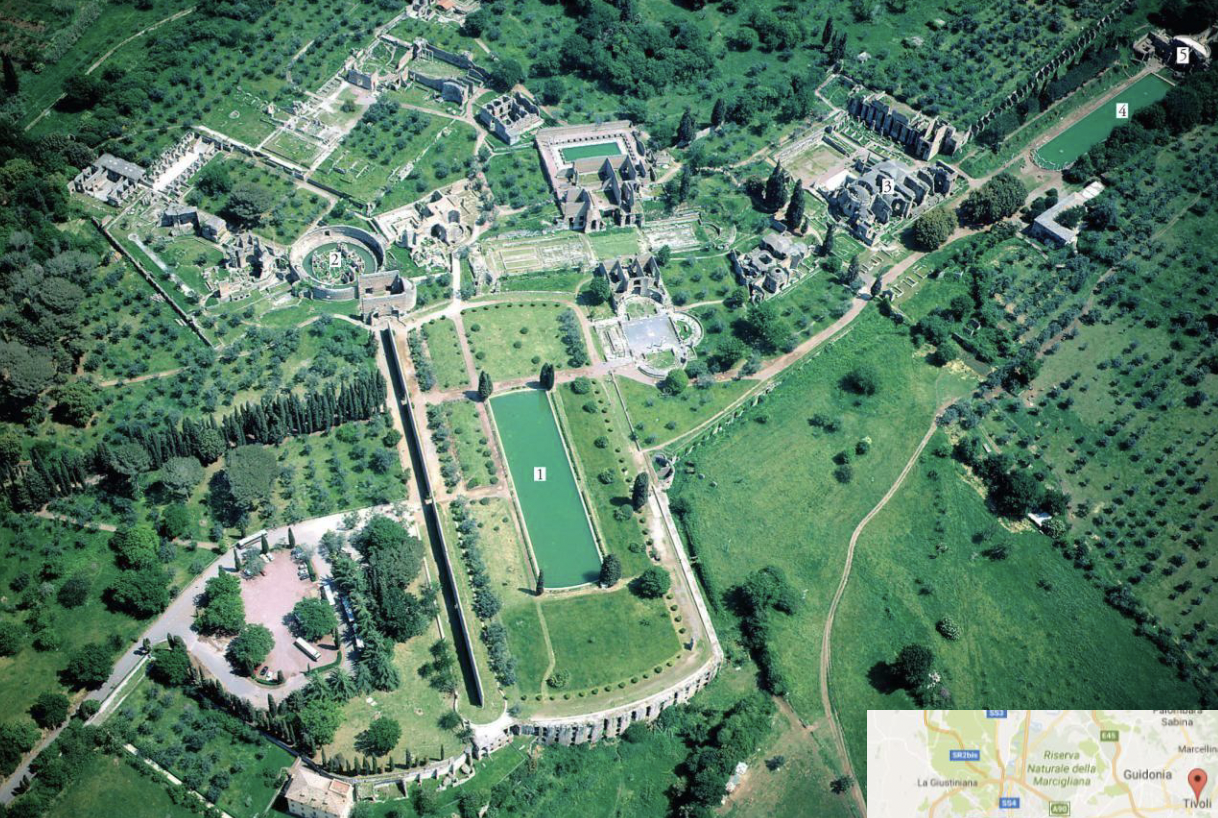
Aerial View of Hadrian’s Villa, Tivoli, 118-138 CE
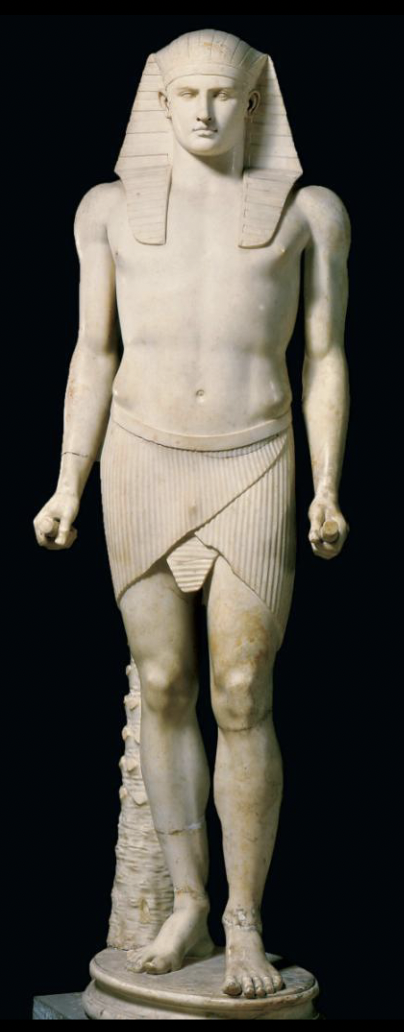
Antonius in the Guise of an Egyptian Pharaoh, Tivoli, 130-138 CE, Marble
Found in the Canopus in Hadrian’s Villa (canal like structure).
Reference to his death in the Nile in Egypt
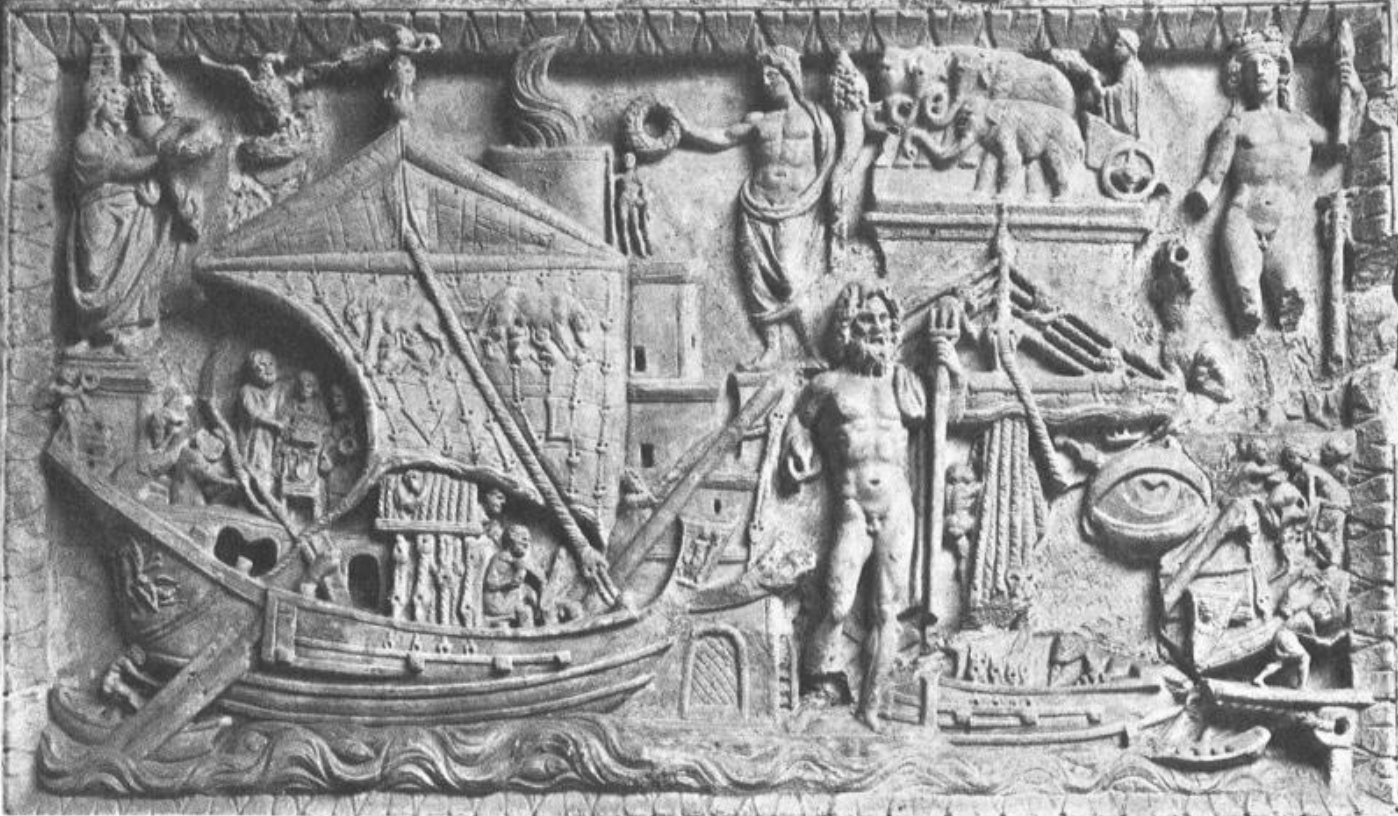
Harbour Relief, Ostia, Late 2nd - Early 3rd Century CE
Depicts bustling port city of Ostia
Wild lions in cages
Blending of cultures form Rome and beyond

Mosaic Floor in the Station of the Merchants of Sabratha, Ostia, 190 CE
Mosaic images are connected to the geographical region where the products that the merchants are selling for that given booth

Facade of the Horrea Apagathiana and Epaproditiana, Ostia, 145-150 CE
Stopping off point for raw materials or products before export
Evidence of use as port city and market
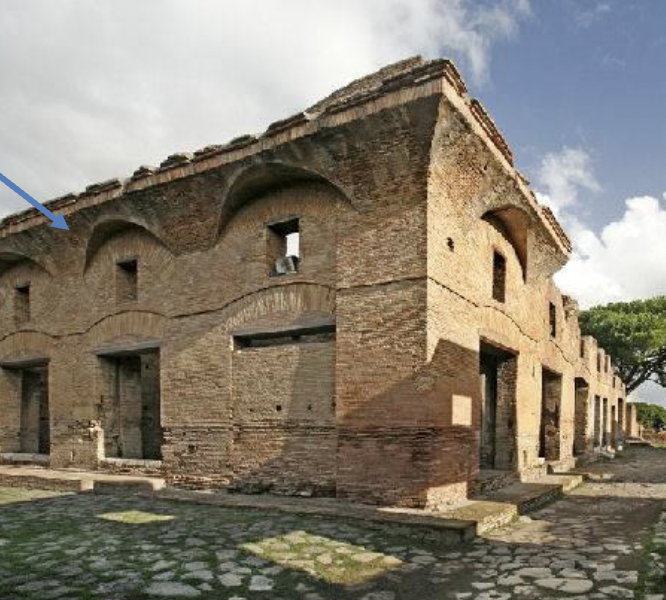
Insula of Diana, Ostia, 150 CE
Apartment building for middle and lower classes
Prone to fires, which Crassus took advantage of to buy off the buildings

Funerary Relief of a Vegetable Vendor, Ostia, Second Half of Second Century CE, Terracotta
Funerary monuments often featured aspects of the individuals profession
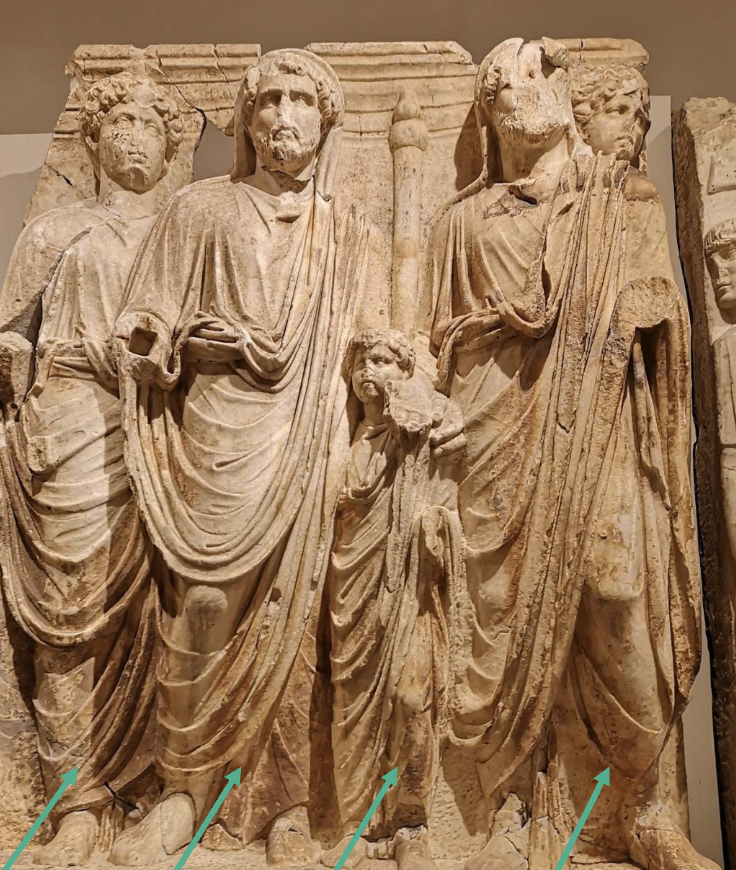
Hadrian and the Antonine Emperors, Ephesus, Turkey, 169, Marble
Part of the frieze of the Great Antonine Altar
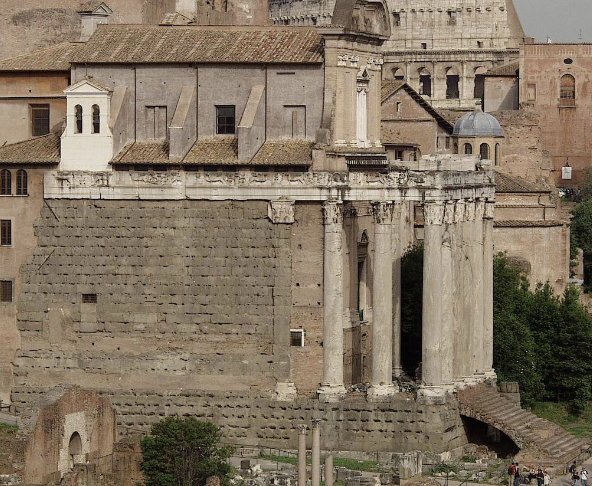
Temple of Faustina the Elder and Antoninus, Rome, Begun 141 CE, Rededicated 161 CE
Commissioned by Antoninus after Faustina’s death because he loved her
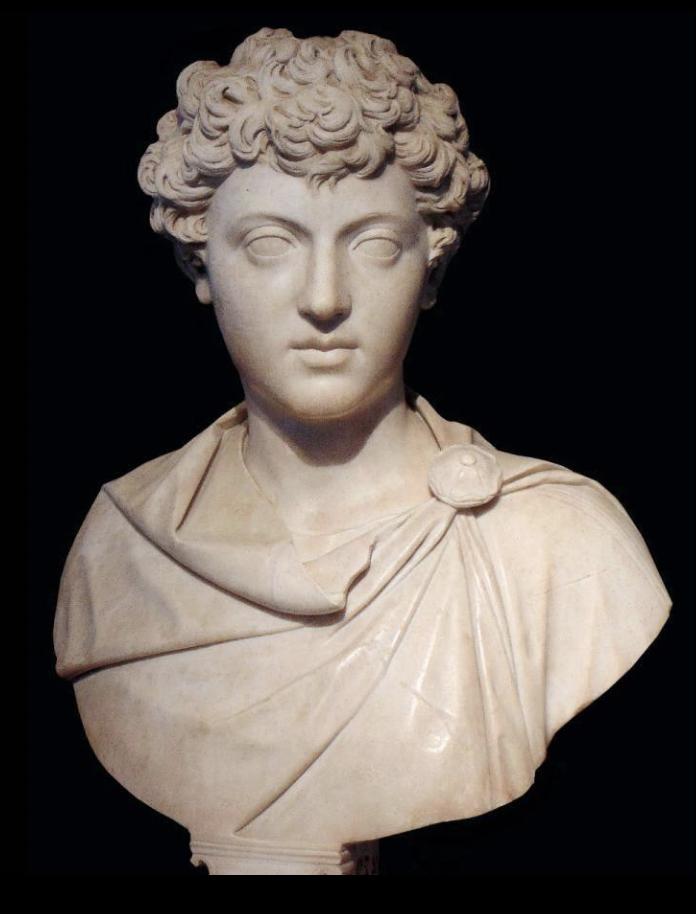
Bust of Young Marcus Aurelius, 140 CE, Marble
Depictions of Marcus Aurelius changed with different stages of his life
Military shawl
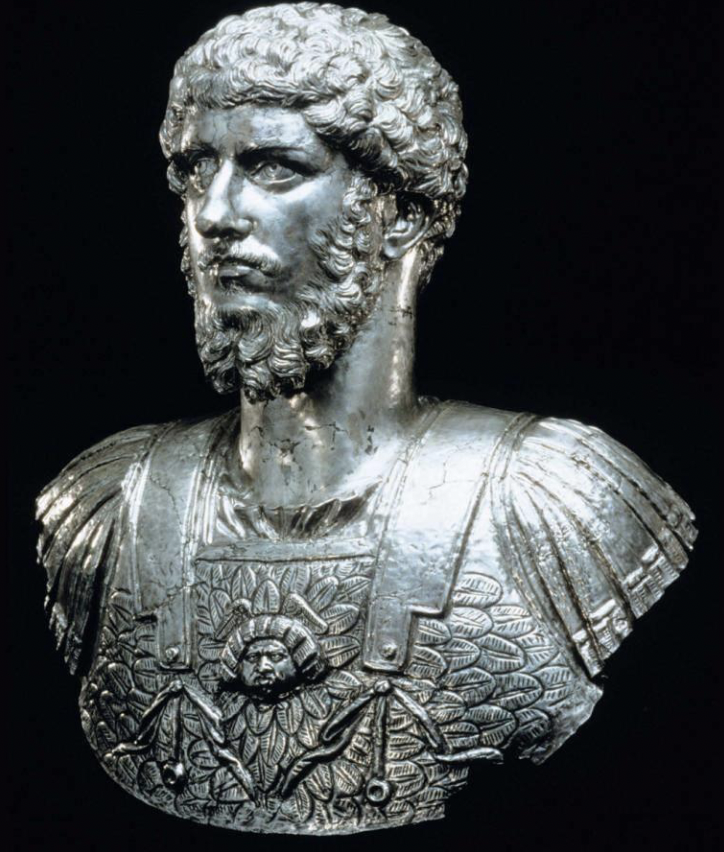
Cuirassed Bust of Lucius Verus, Marengo, 161-169 CE, Silver
Harder to capture detail on silver than it is on marble
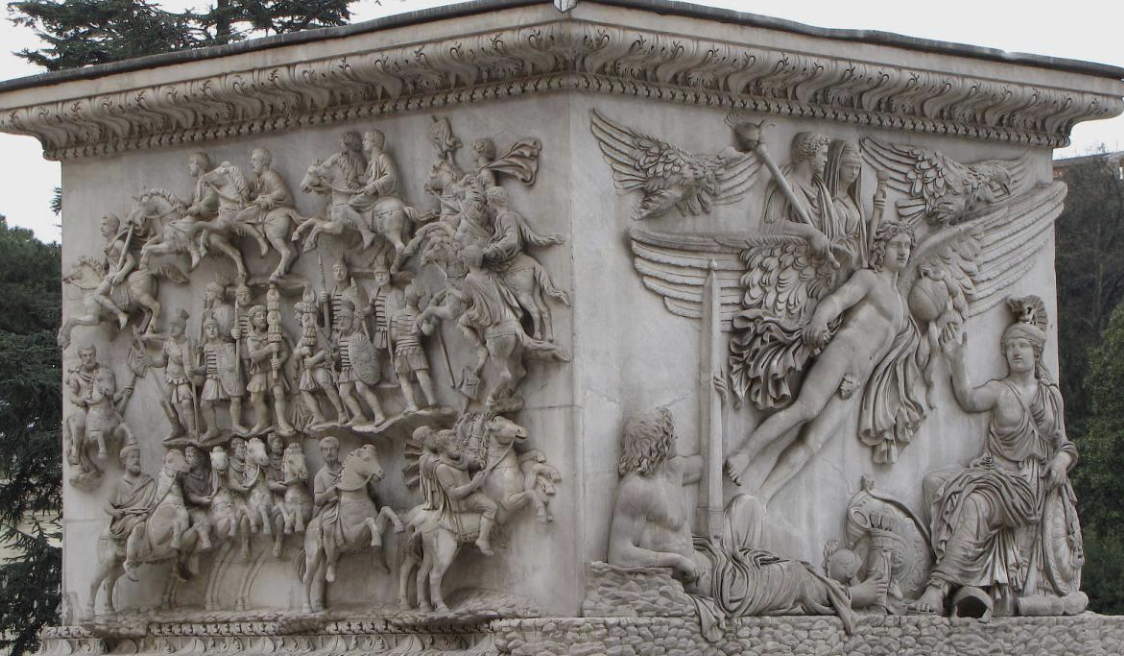
Pedastal of Column of Antoninius Pius, Rome, 161 CE, Marble
Depicts funerary rites and apotheosis with the divine genius
Depicts “decursio” (processions on horseback circling around)
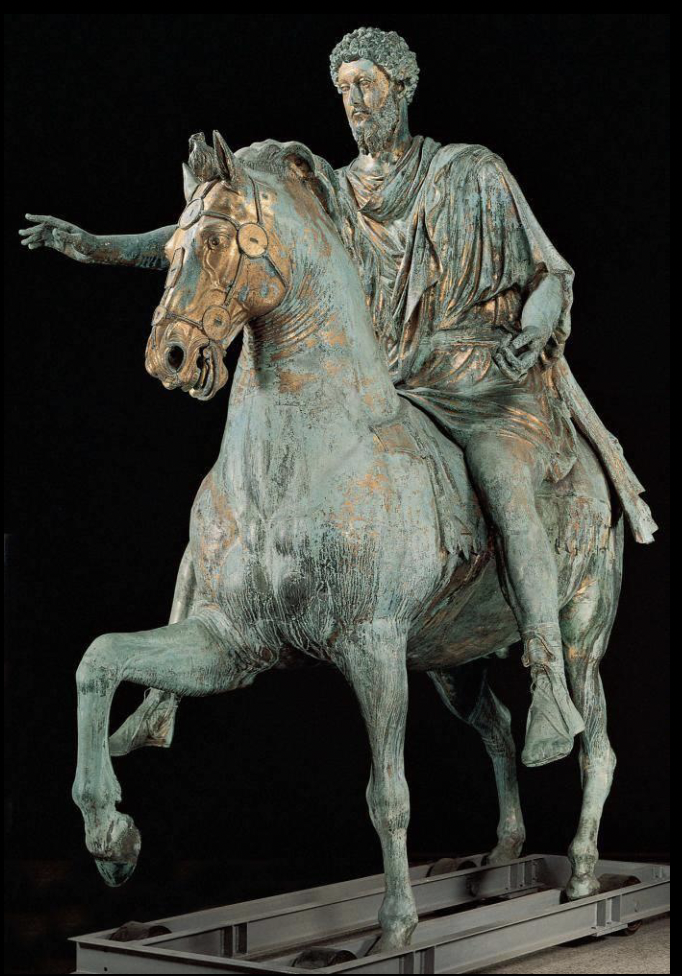
Equestrian Statue of Marcus Aurelius, Rome, 175, Bronze
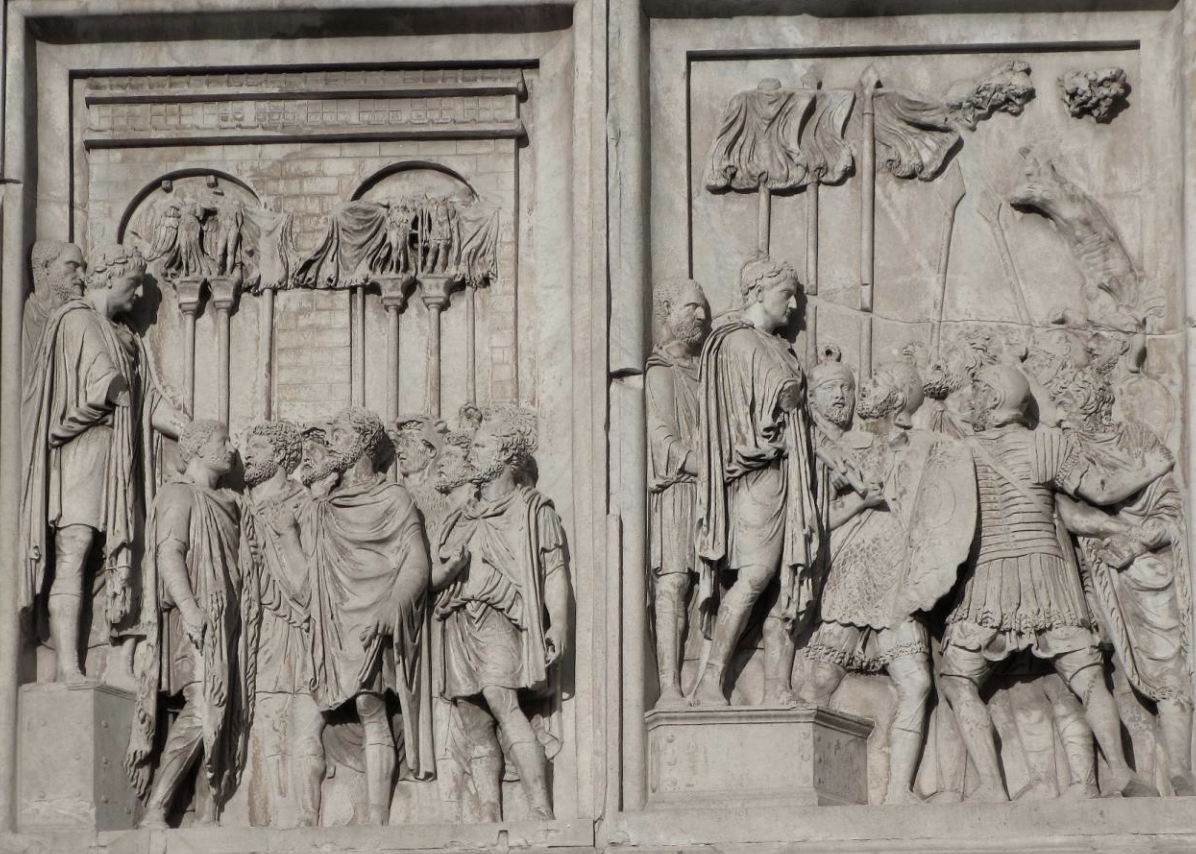
Adlocutio and Presentation of Prisoners, 2 of 8 panels on lost Arch of Marcus Aurelius, Rome, 176-180 CE
Reused on Arch of Constantine
Commemorates military campaigns in Europe
Sacrifice panel and triumph panel
Commodus (son of Marus Aurelius and his co-ruler) present in the column before damnatio
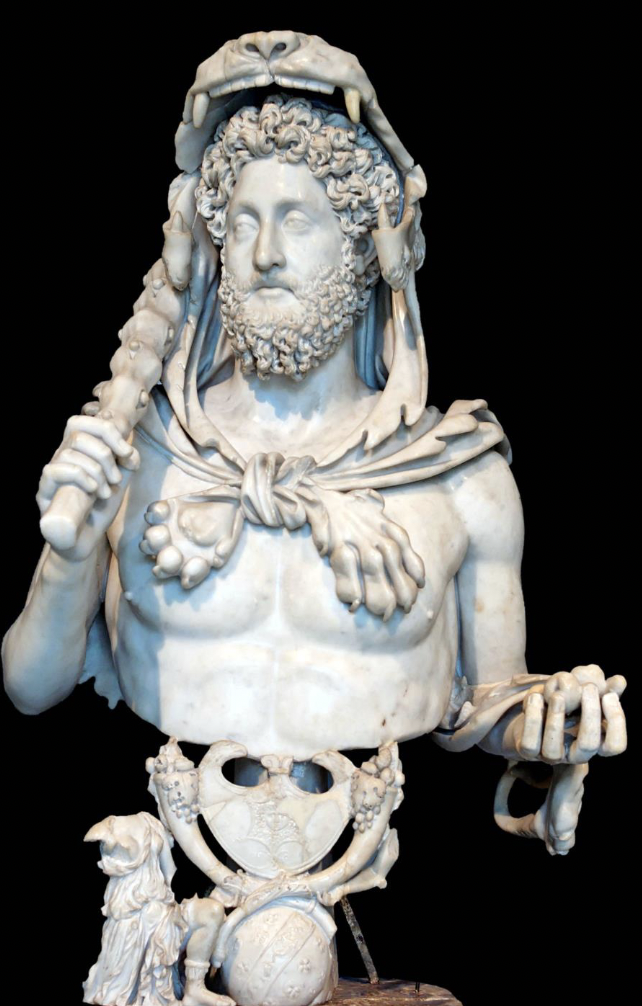
Bust of Commodus in the Guise of Hercules, Esquiline Hill, Rome, 190-195 CE, Marble
Found in imperial horti (gardens)
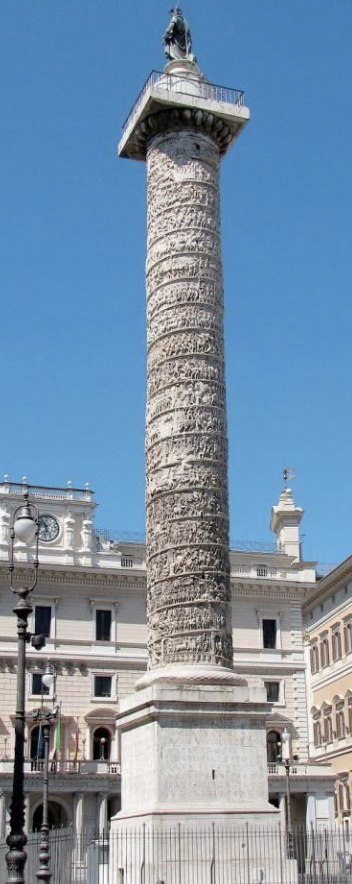
Column of Marcus Aurelius, Rome, erected between 180-193 CE, Carrera Marble
Example of a cenotaph (funerary monument without remains)
Later restorations in 16th century lost reliefs on base and the statue at top of column

Adlocutio, Detail of Spiral Frieze of Column of Marcus Aurelius, 180-193 CE, Carrera Marble
Efforts to mock style of Column of Trajan
Victory of Romans over barbarians
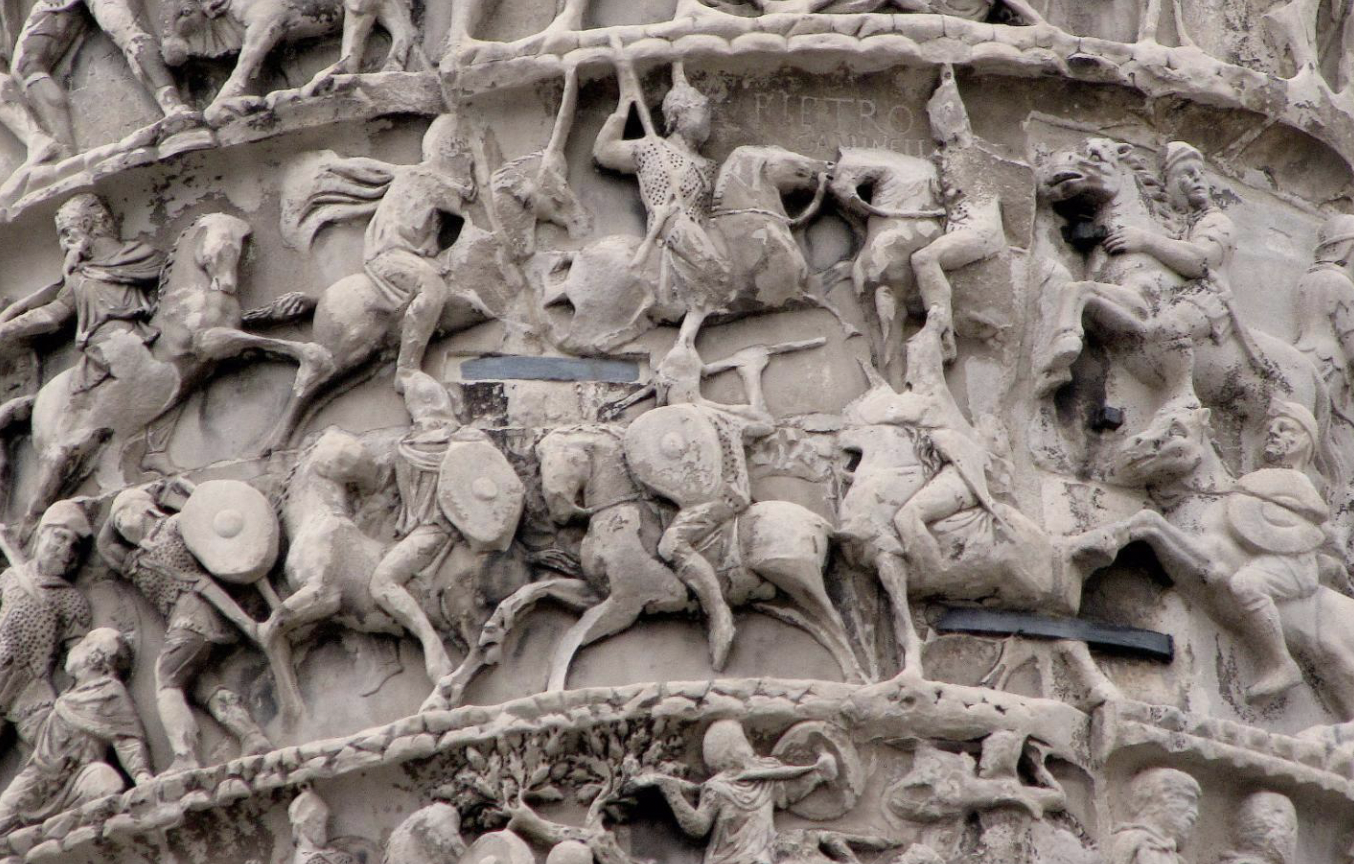
Cavalry Battle, Detail of Spiral Frieze on Column of Marcus Aurelius, 180-193 CE, Carrera Marble

Sarcophagus with Massacre of the Niobids, Rome, 134-140 CE, Marble
Unfinished
Myth of Niobids: murdered children because of pride (hubris)
Raises question: did people have say in what their sarcophagus was going to look like? Cause this is a strange myth to have on one…

Sarcophagus with Roman General Granting Clemency, 170, Marble
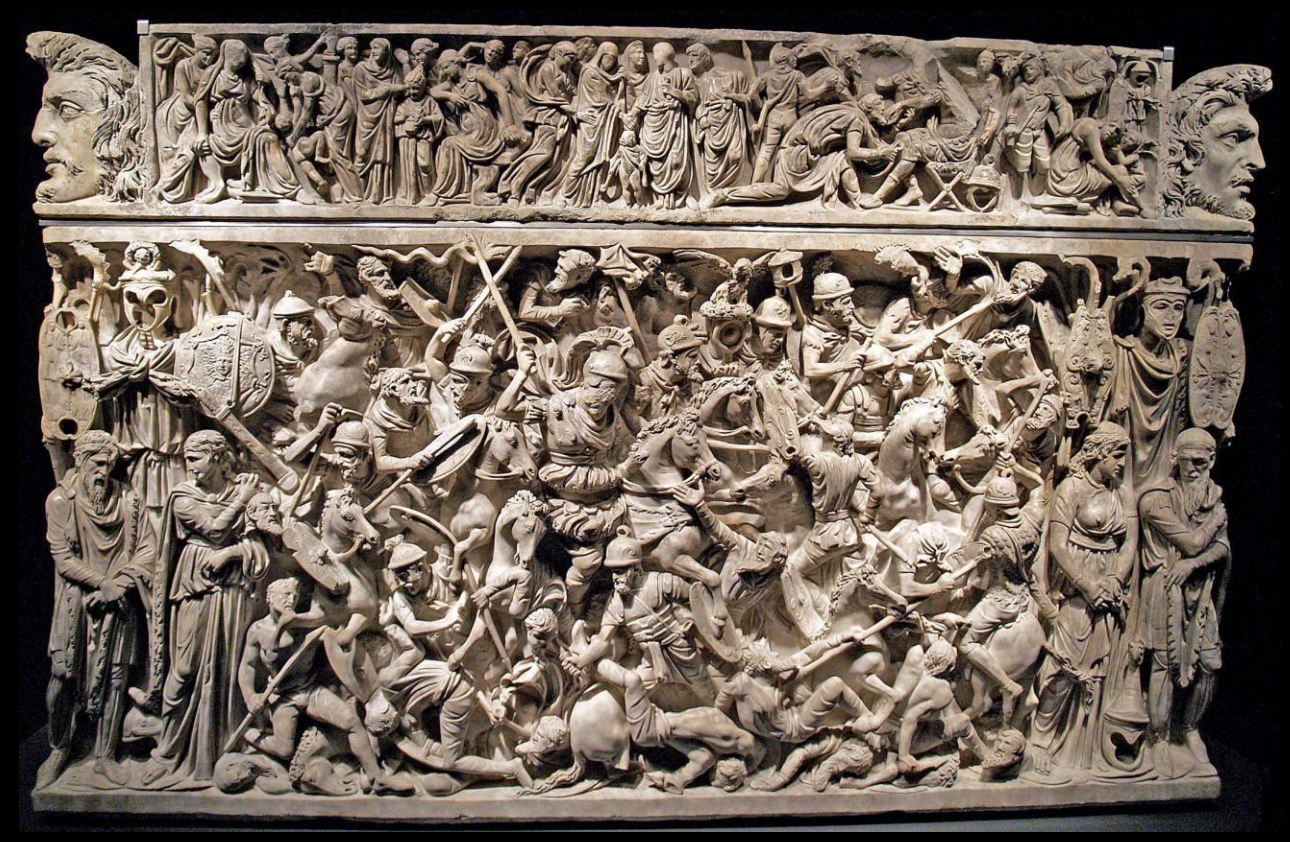
Sarcophagus with Battle Between Romans and Barbarians, Portonaccio, 180-190 CE, Marble
Displays extravagant art of marble carving
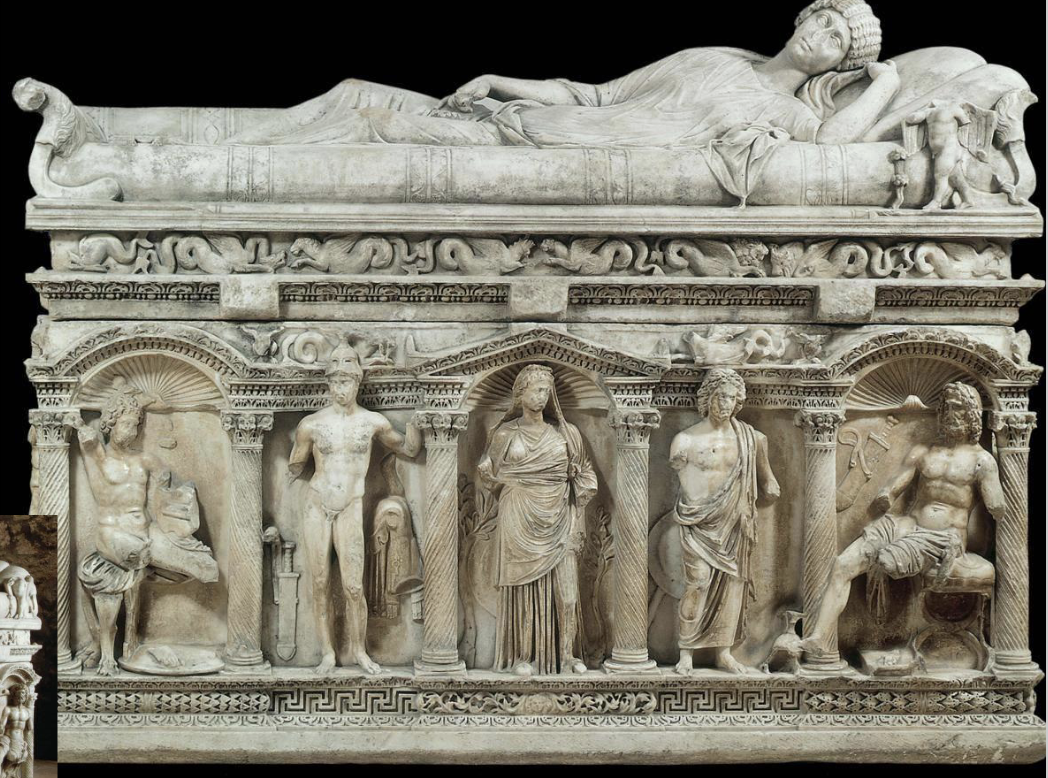
Sarcophagus with Kline Portrait of a Woman, Rapolla, 165-170 CE, Marble
Connection to earlier sarcophagi with reclining women
Likely belonged to a very elite woman, as she is reclining alone
Architectural elements
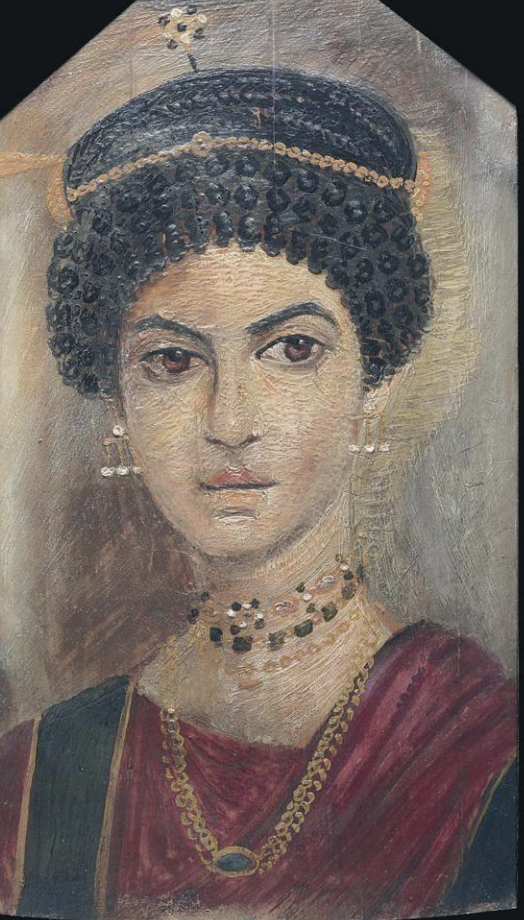
Mummy Portrait of a Young Woman, Hawara, Egypt, 110-120 CE, Encaustic on Wood
Encaustic = pigment and hot wax
Hybridity due to Roman influence in Egypt